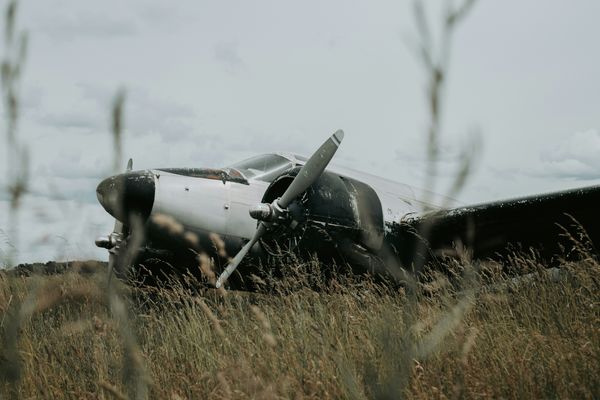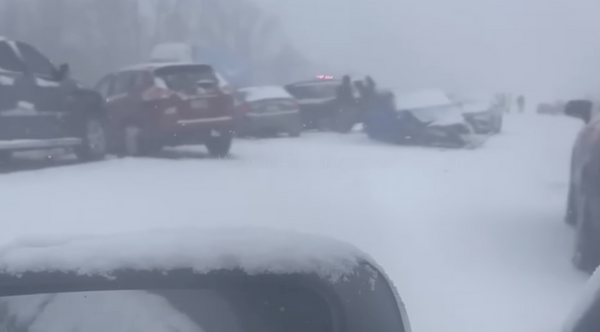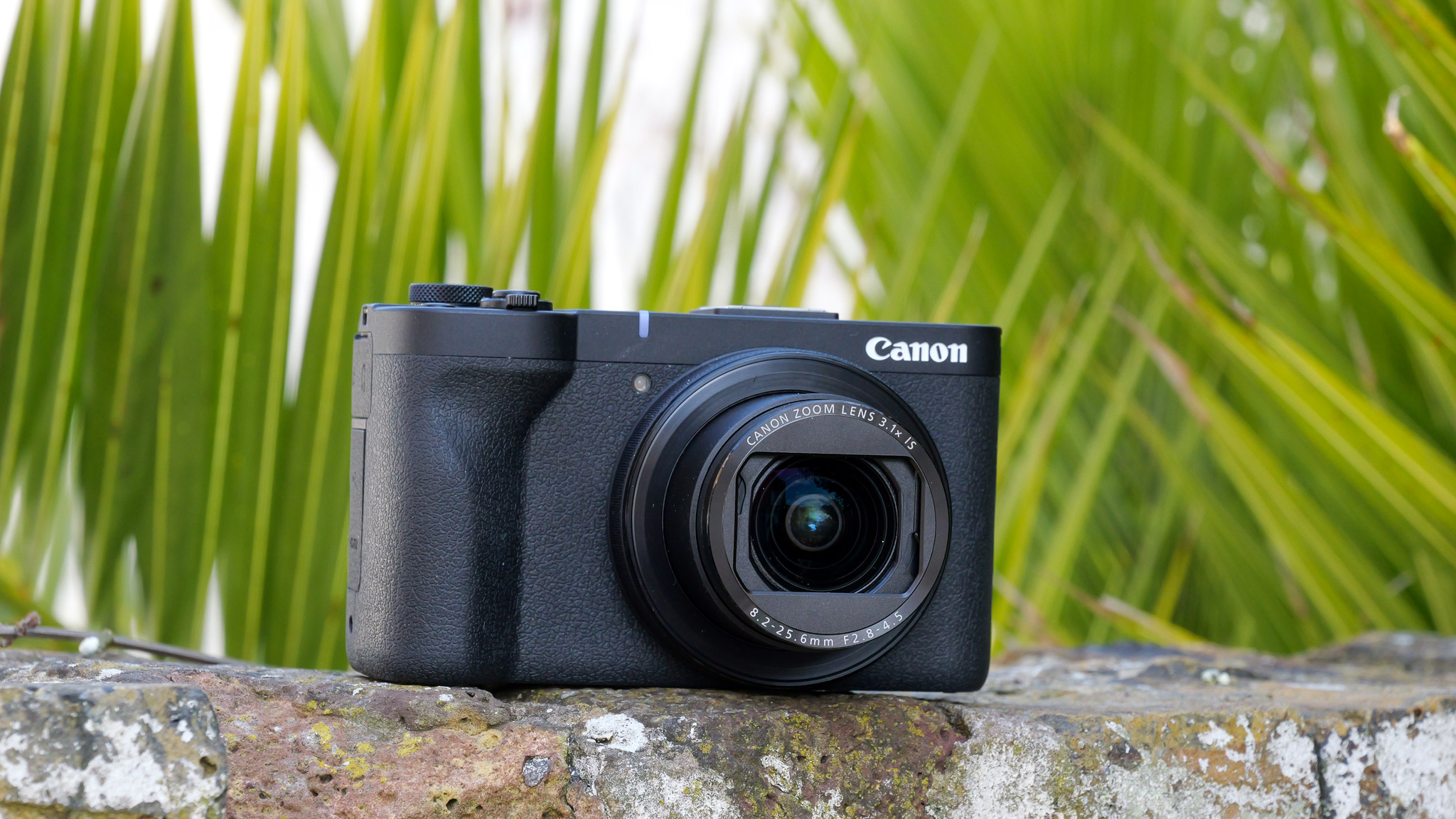
Canon PowerShot V1: two-minute review
There's been a buzz surrounding the PowerShot V1, principally because the compact V-series vlogging camera is like a bigger sibling to the trending (and dated) PowerShot G7X Mark III, with an all-new 1.4-inch sensor and 16-50mm lens.
Put the two cameras side by side and the design / control layout similarities are clear (see below) – these are pocketable compact cameras, with the PowerShot V1 being the bigger of the two, and both offer impressive suites of video features.
The PowerShot V1's most obvious rival is the Sony ZV1-II, while the DJI Osmo Pocket 3 is a gimbal-stabilized alternative, and in many regards the well-rounded PowerShot V1 is a clear winner, even if there's a strong case to be made for DJI's take on the format.
Headline features include that 22.3MP, 1.4-inch sensor. That's a rare sensor size – it's essentially the same as Micro Four Thirds, but in 3:2 aspect ratio rather than 4:3. It measures 18.4 x 12.3 mm – much bigger than the 1-inch type used in the aforementioned rivals, which measures 13.2mm x 8.8mm.
A bigger sensor size in general means better image quality, but there are caveats. The notable PowerShot V1 drawback for me is the f/2.8-4.5 maximum aperture of its 3.1x optical zoom lens. Compare that to the ZV-1 II's f/1.8-4, and the PowerShot G7X Mark III's 4.2x zoom with a f/1.8-2.8 maximum aperture, and the V1 comes up short for light-gathering capabilities, which in some respects counters the image-quality advantage of its larger sensor.
Still, it's the widest lens of the bunch, with a 16-50mm range that's ideal for vlogging. Even with digital image stabilization active and the consequent image-area crop applied, the framing is plenty wide enough for vlogging with the camera at arm's reach – that extra 2mm at the wide end goes a long way.
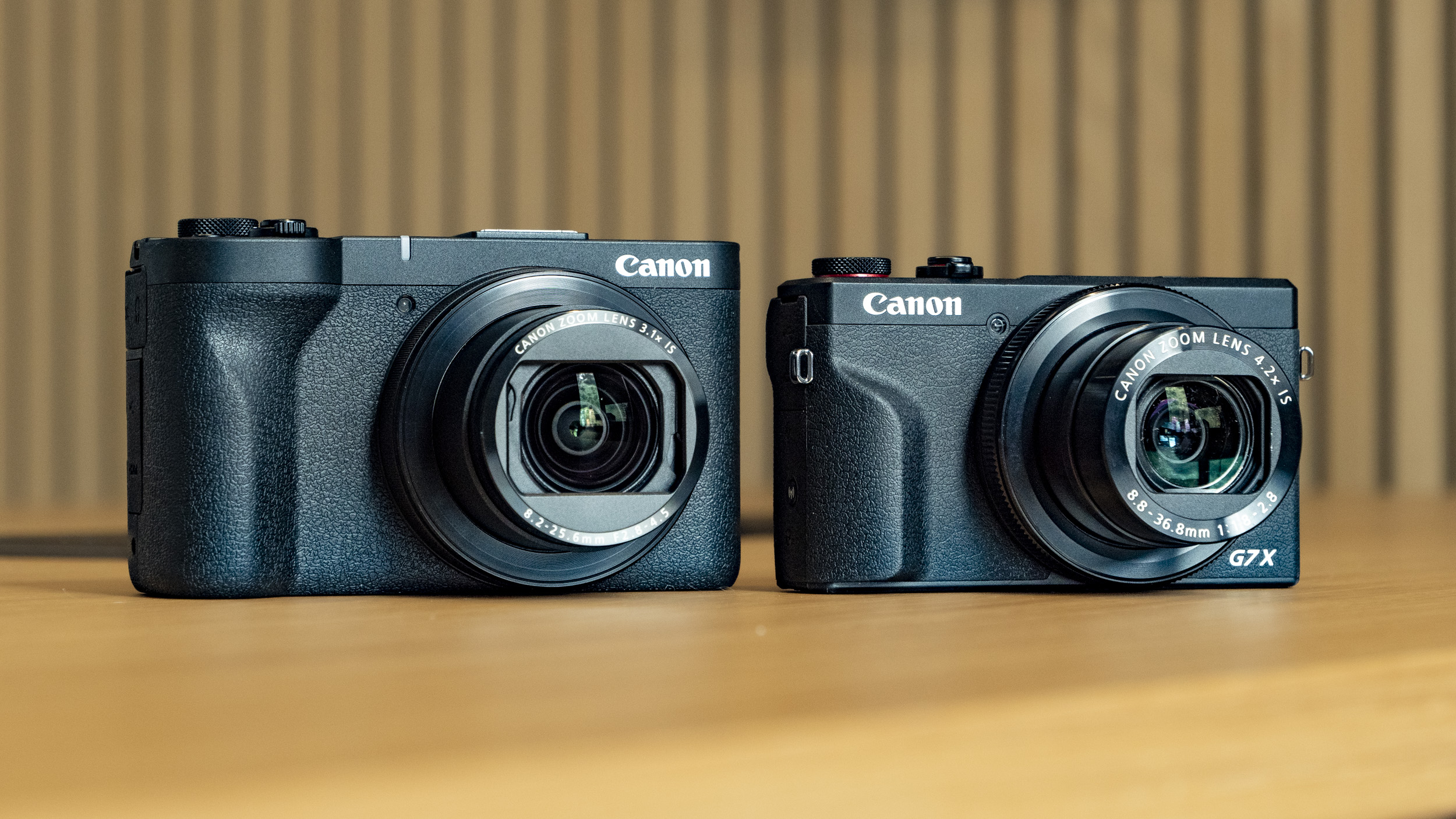
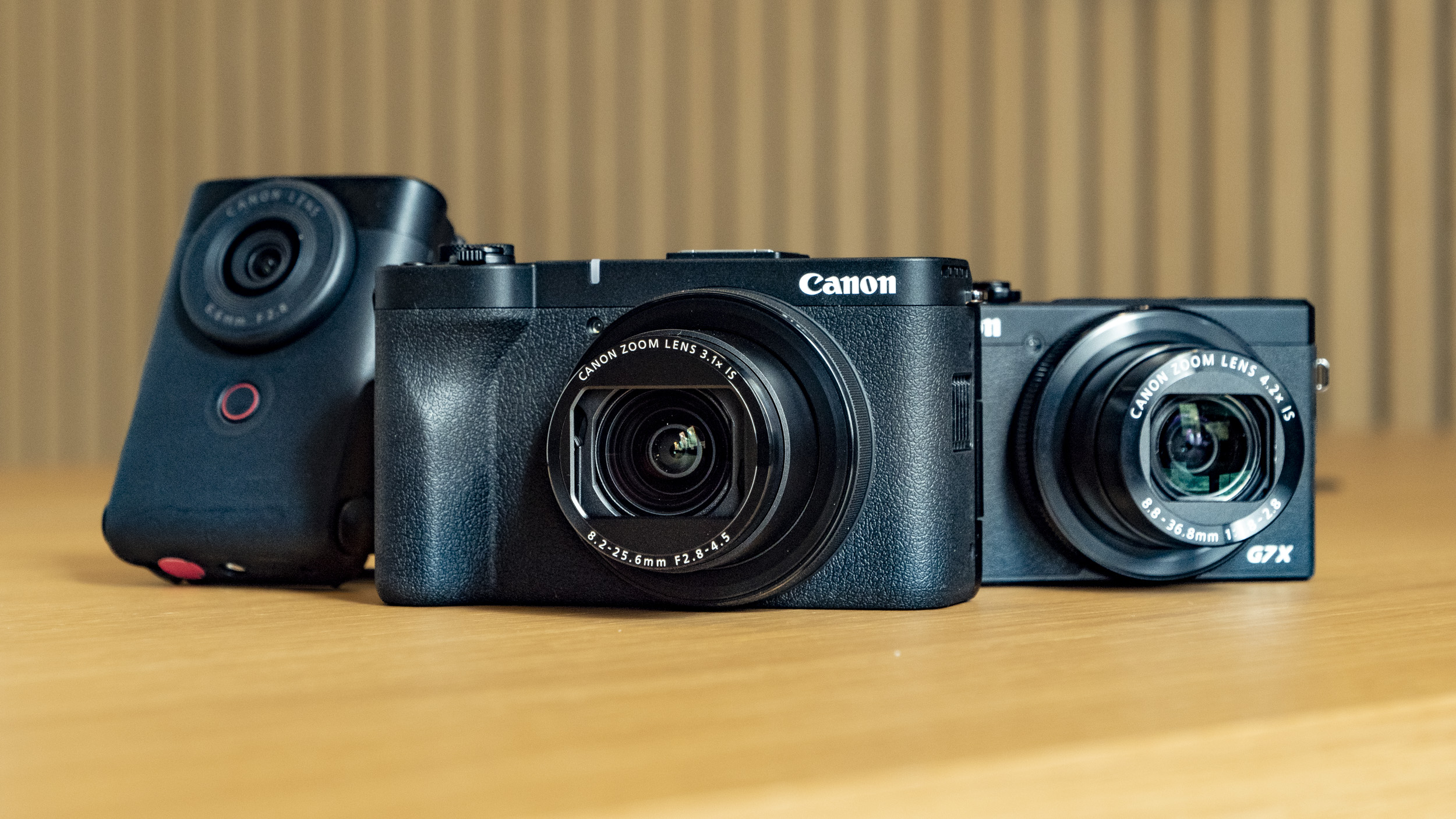
The comprehensive suite of video features includes cooling vents and unlimited 4K 30fps video recording times, a built-in ND filter, Canon's best-ever autofocus for a PowerShot compact, plus mic and headphone ports.
Photographers are well catered for too, with a hotshoe accepting an external flash (but not 5-pin ones), and a rapid 15fps burst shooting speed that's doubled when using the electronic shutter, ably supported by that reliable subject-tracking autofocus.
Image stabilization is unavailable when shooting 4K video at 60fps, plus there's a 1.4x crop using this setting. On paper, both sound like major drawbacks, but that 16mm lens meant I was just about able to deal with the crop when vlogging handheld. The image stabilization is another matter, and some may want to drop down to 30 or 24fps when vlogging on foot, in order to keep their videos nice and steady.
These factors aside, the PowerShot V1 is an undeniably strong overall performer. As a complete package with Sony-beating features and a relatively decent price, it seems set to be a vlogging star.
Canon PowerShot V1 specs
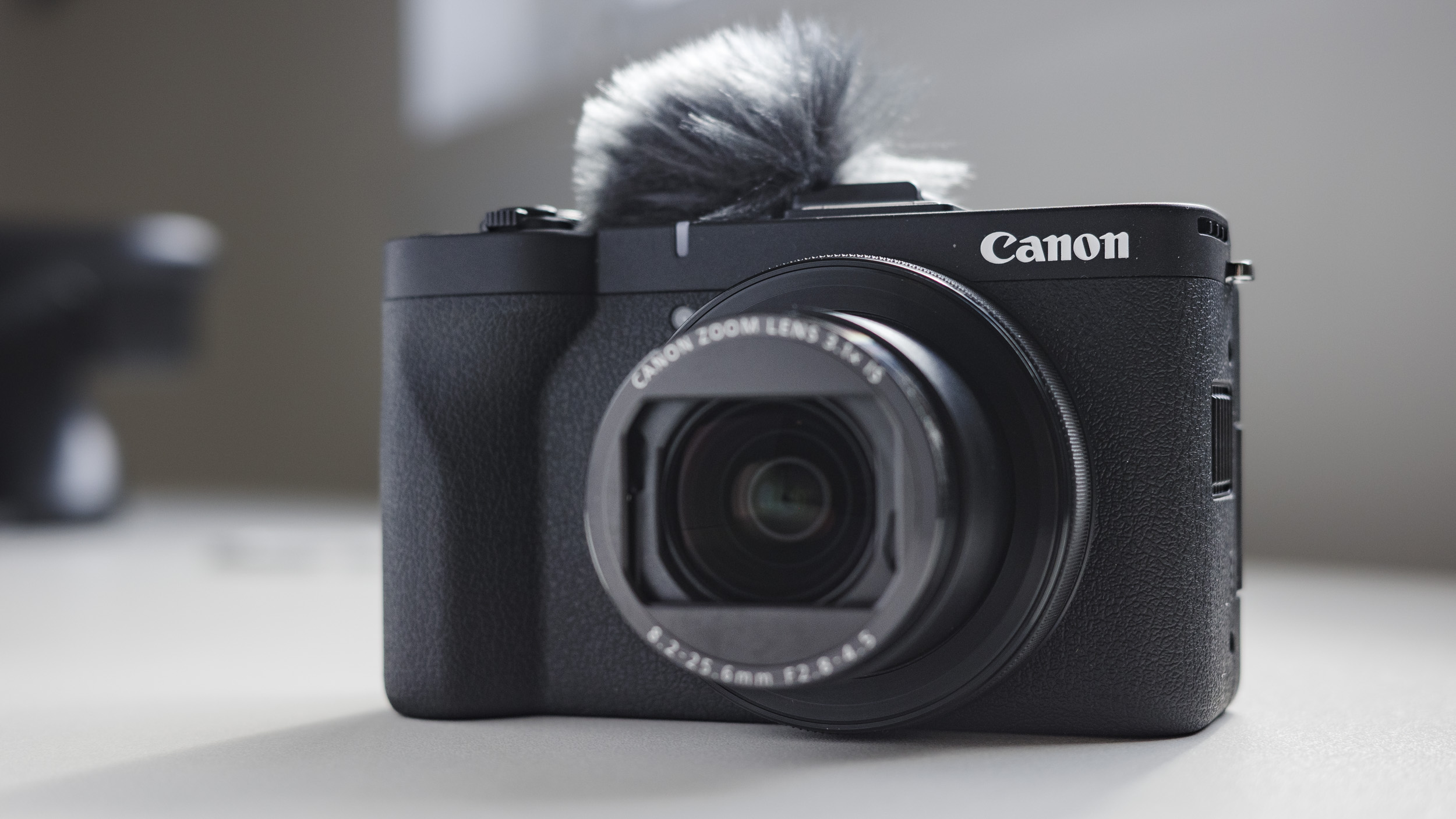
Canon PowerShot V1: Price and availability
- £959.99 / AU$1,449 (US pricing TBC)
- Available from early April, exact date TBC
The Canon PowerShot V1 costs £959.99 / AU$1,449, with US pricing to be confirmed, and is available to order in the UK now (Canon Australia says 'late April', with an exact US release date also yet to be confirmed by Canon).
That starting price is less than what the older G7X Mark III currently goes for, with scalpers are capitalizing on the smaller model's popularity. However, the Sony ZV-1 II costs around 20% less than the V1, while the DJI Osmo Pocket 3 is about half the price.
- Price score: 4/5
Canon PowerShot V1: Design and handling
- Similar design and control layout to the PowerShot G7X Mark III
- Under 500g and just about pocket-sized
- Includes vari-angle touchscreen, hotshoe, headphone, mic and micro HDMI ports
Canon has created a well-rounded and solid compact camera with a focus on video. Its design and control layout are strikingly similar to the PowerShot G7X Mark III's (see below), but on a larger scale that has enabled extra features such as a hotshoe and vari-angle screen, plus of course that larger sensor.
That being said, that undeniable 'video-first' approach is reflected in the lack of an electronic viewfinder or built-in flash – two features you might expect to see in a premium-ish compact like this.
The camera sits nicely in the hand thanks to its generous handgrip, and is adorned with a number of customizable buttons and controls. A special mention goes to the lens ring, which is ideal for making quick changes to aperture or your desired setting, plus the rear switch for instantly toggling between photo and video shooting modes.
In general, I found the PowerShot V1 intuitive to use thanks to its clearly labelled controls and well laid-out user interface. The only thing I disliked was the way Canon has hidden the slow-motion shooting mode deep in the menus. Most manufacturers make it available via a physical dial or switch these days, and I'd expect that here given the focus on video.
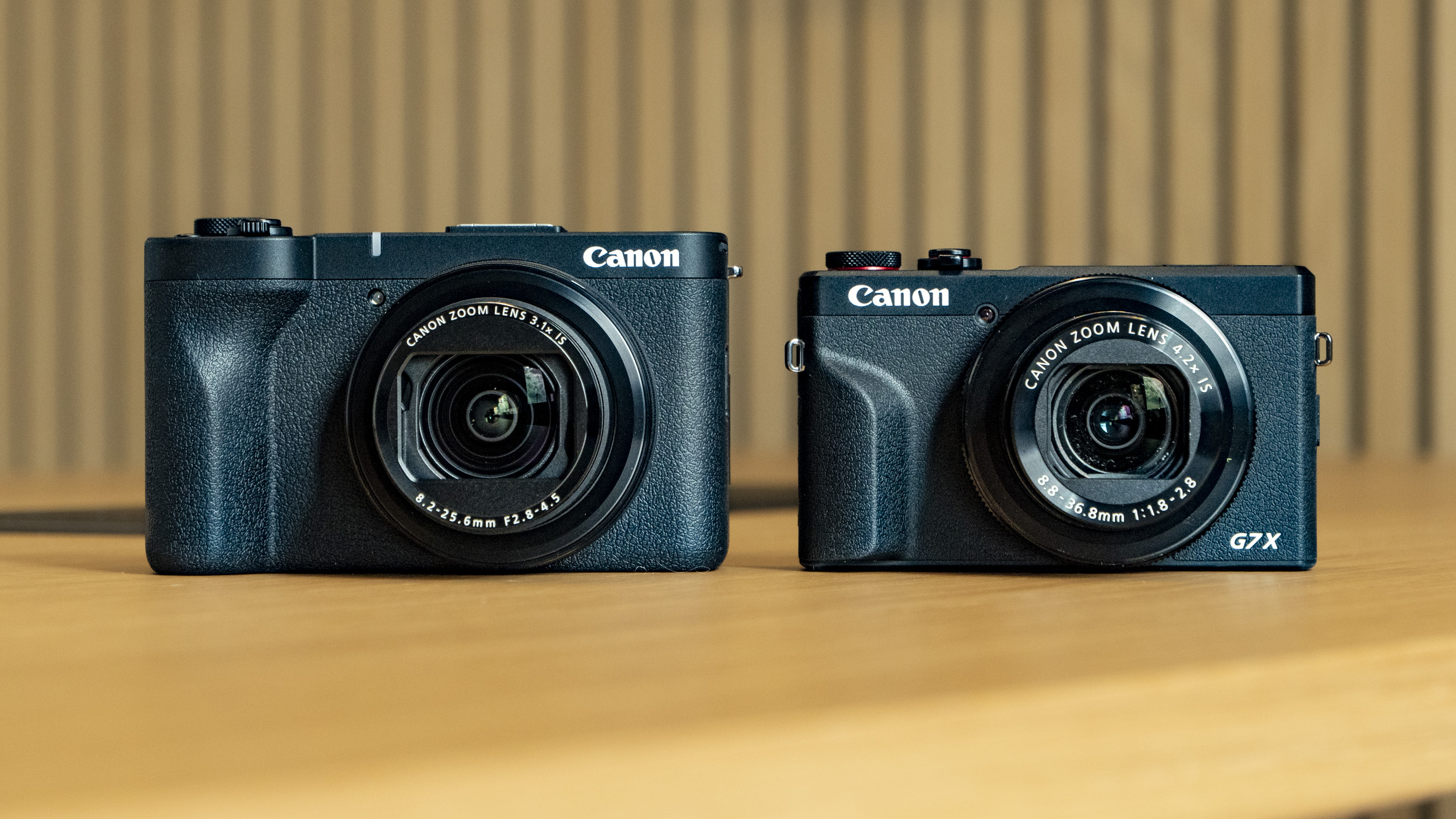
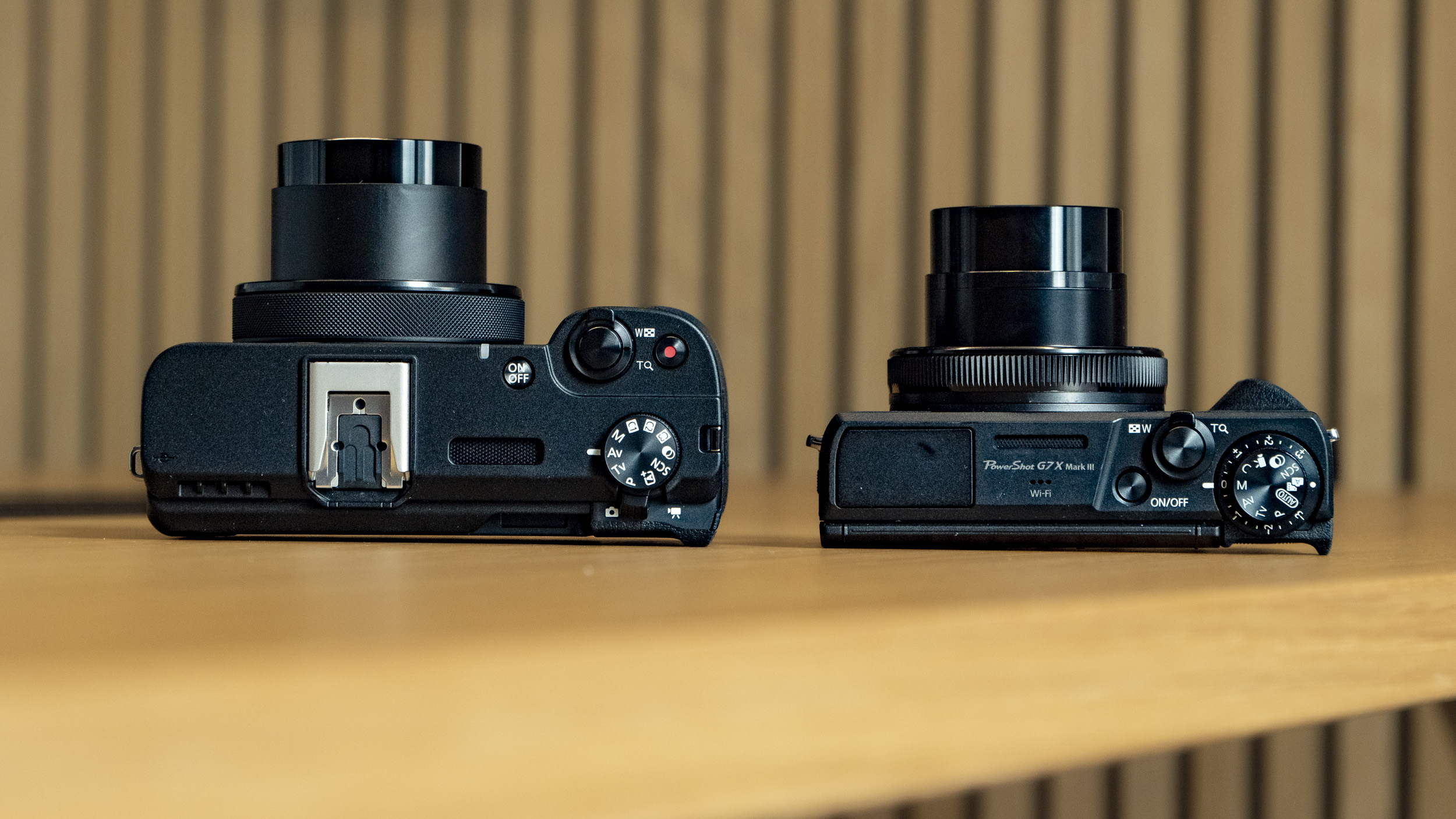
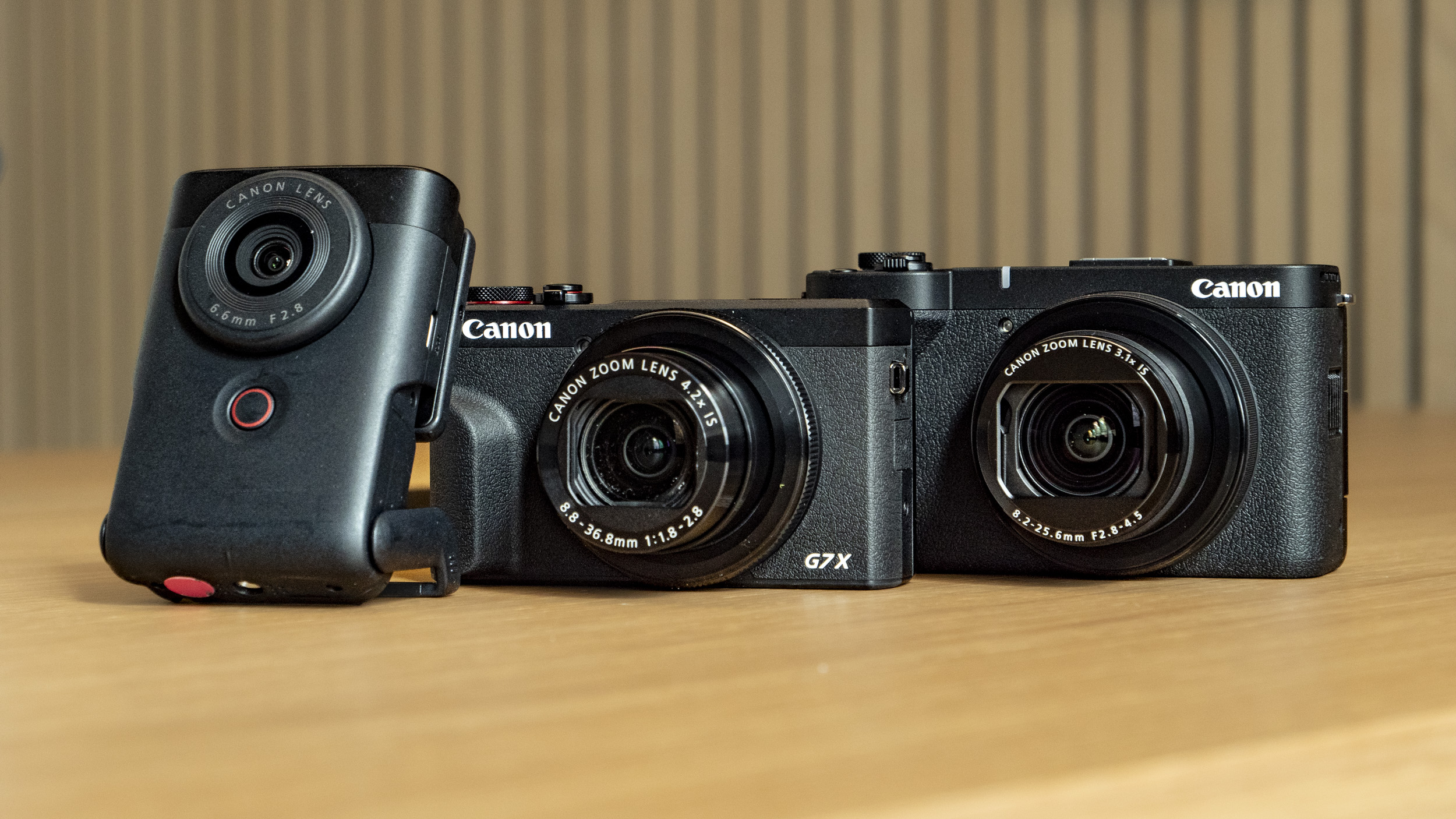
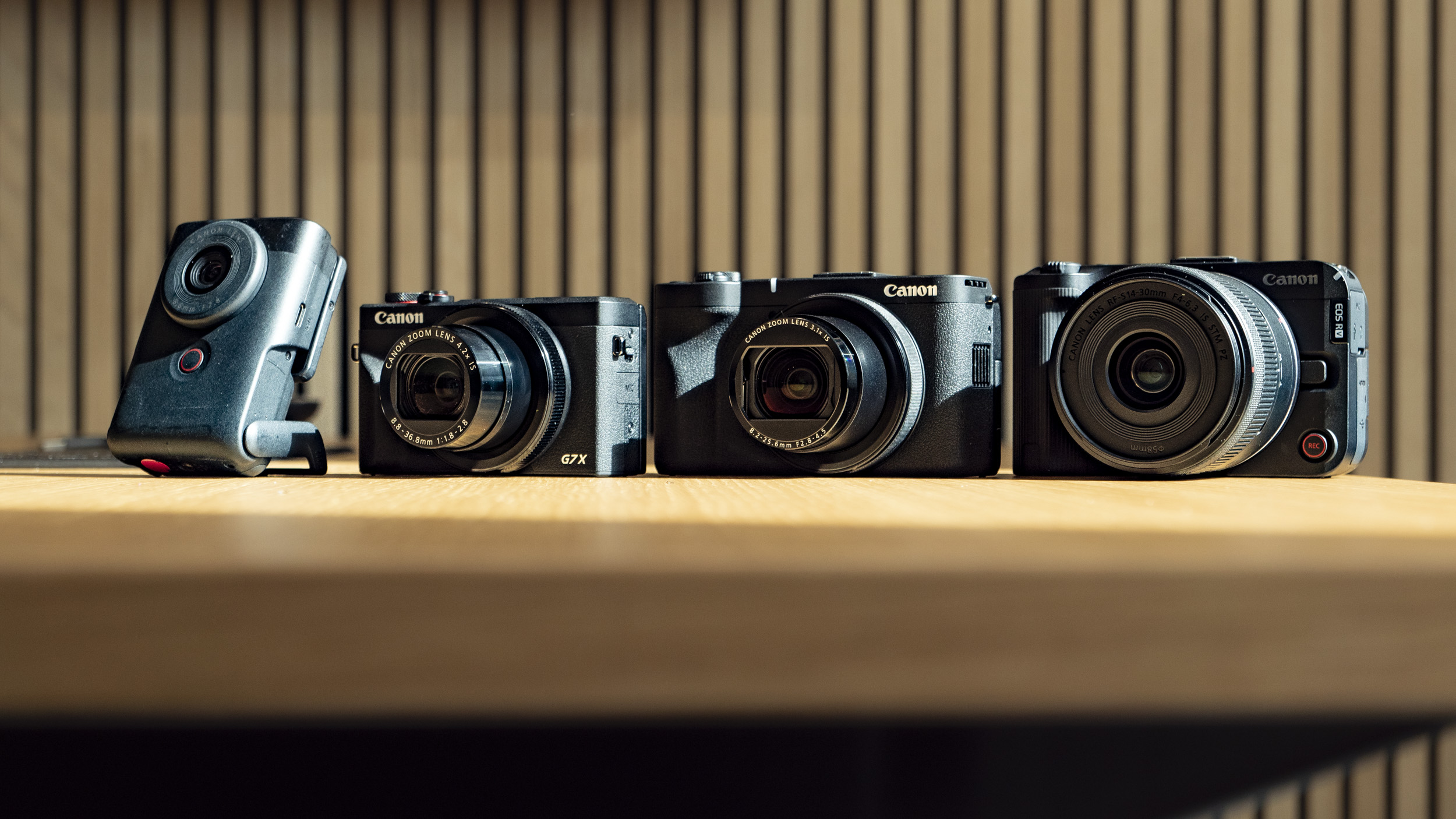
With the camera powered off and the lens retracted, I was able to fit it into my jacket pocket, which is impressive given the decent-size 1.4-inch sensor inside. Be warned, though: it's not going to squeeze into anyone's jeans pocket – not even with the increasingly baggy ones currently in fashion.
A vari-angle touchscreen is pretty much the norm in 2025 for video-focused cameras – it can be flipped out and tilted upwards for easy viewing from awkward angles when shooting horizontally, and flipped around for vlogging. As mentioned above, there's no electronic viewfinder here, however, so you'll need to use the screen for composing all your shots. I didn't mind that in general, but on the sunnier days I would have preferred using a glare-free viewfinder over squinting at the glossy screen.
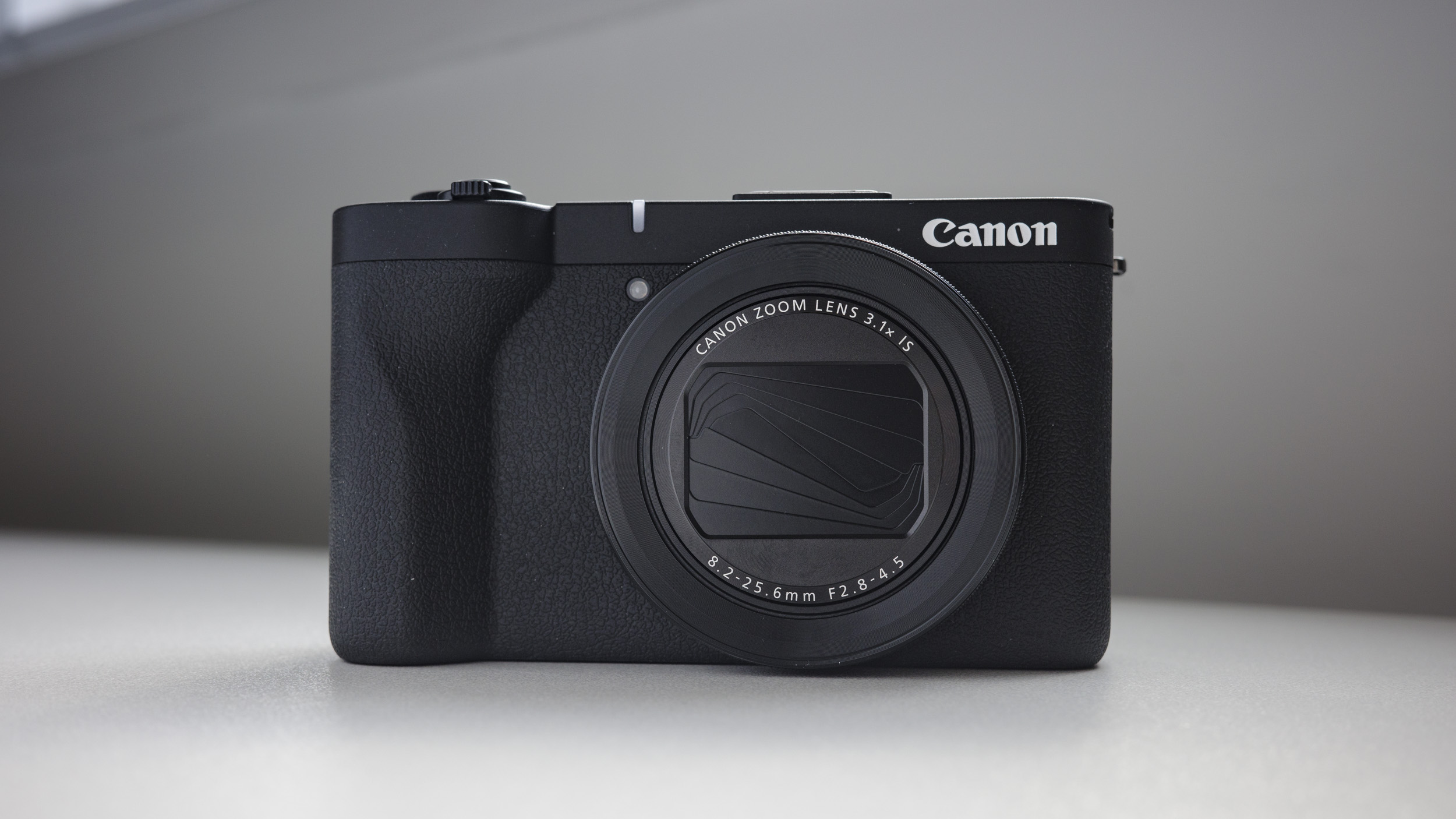
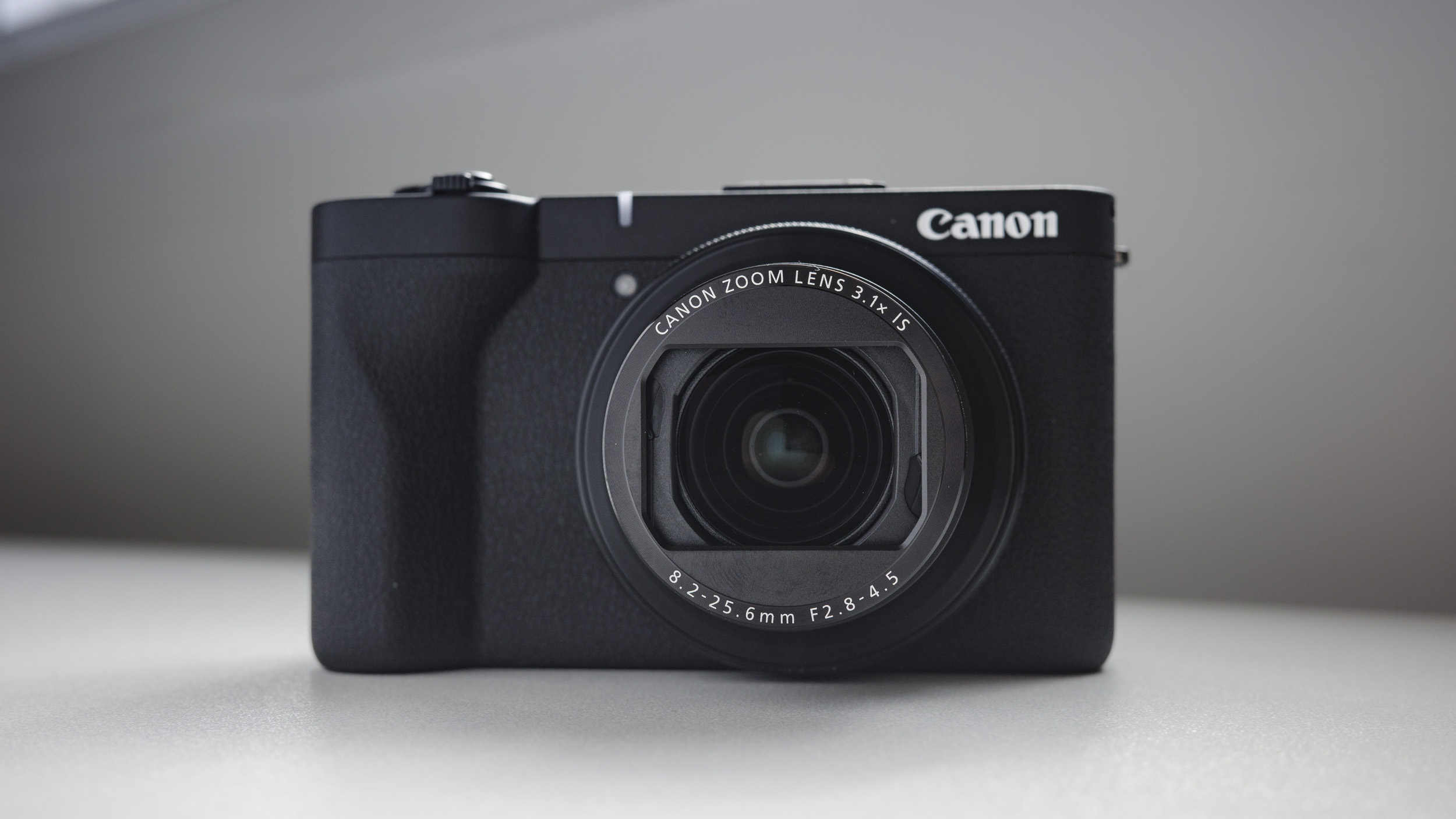
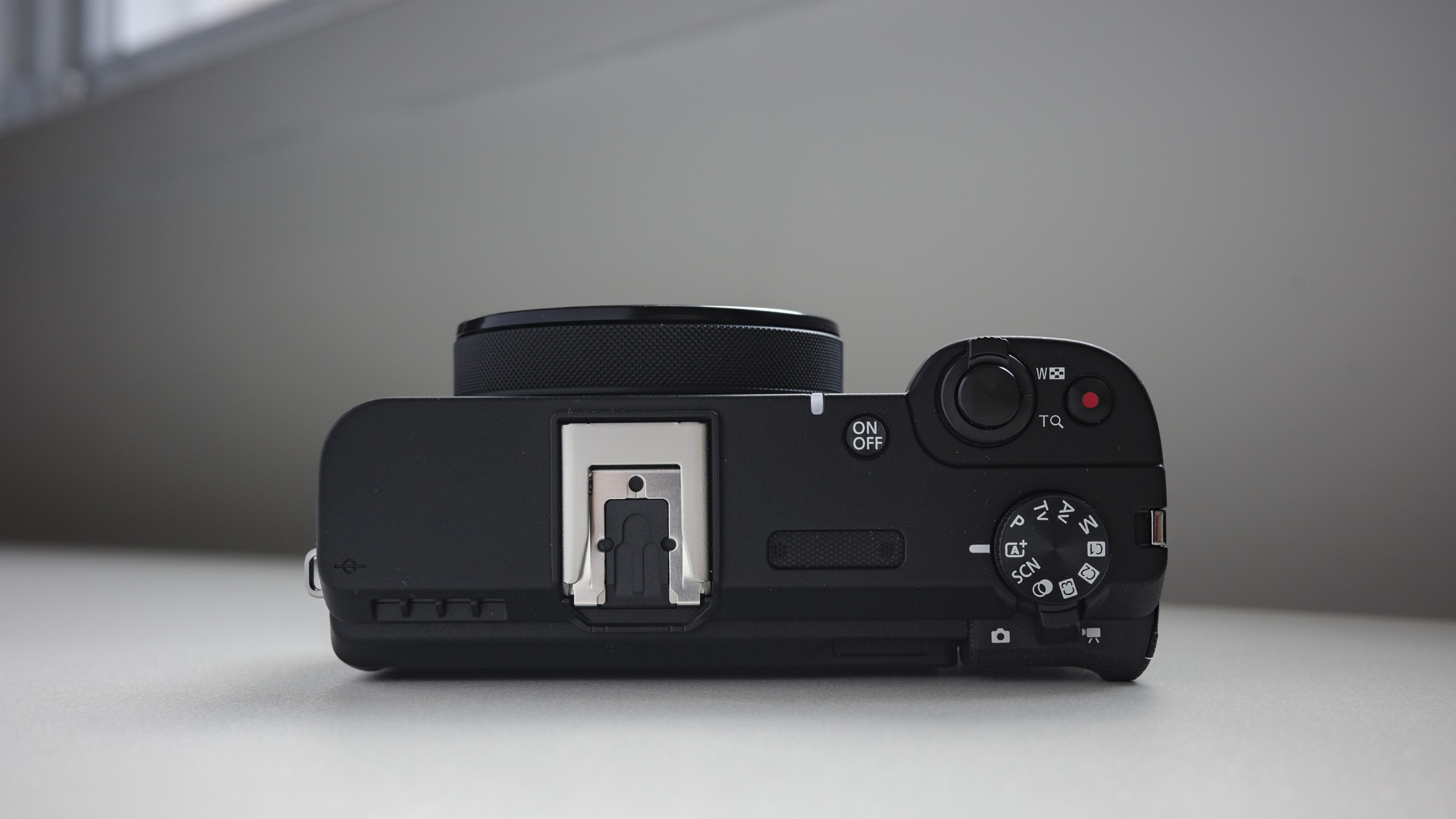
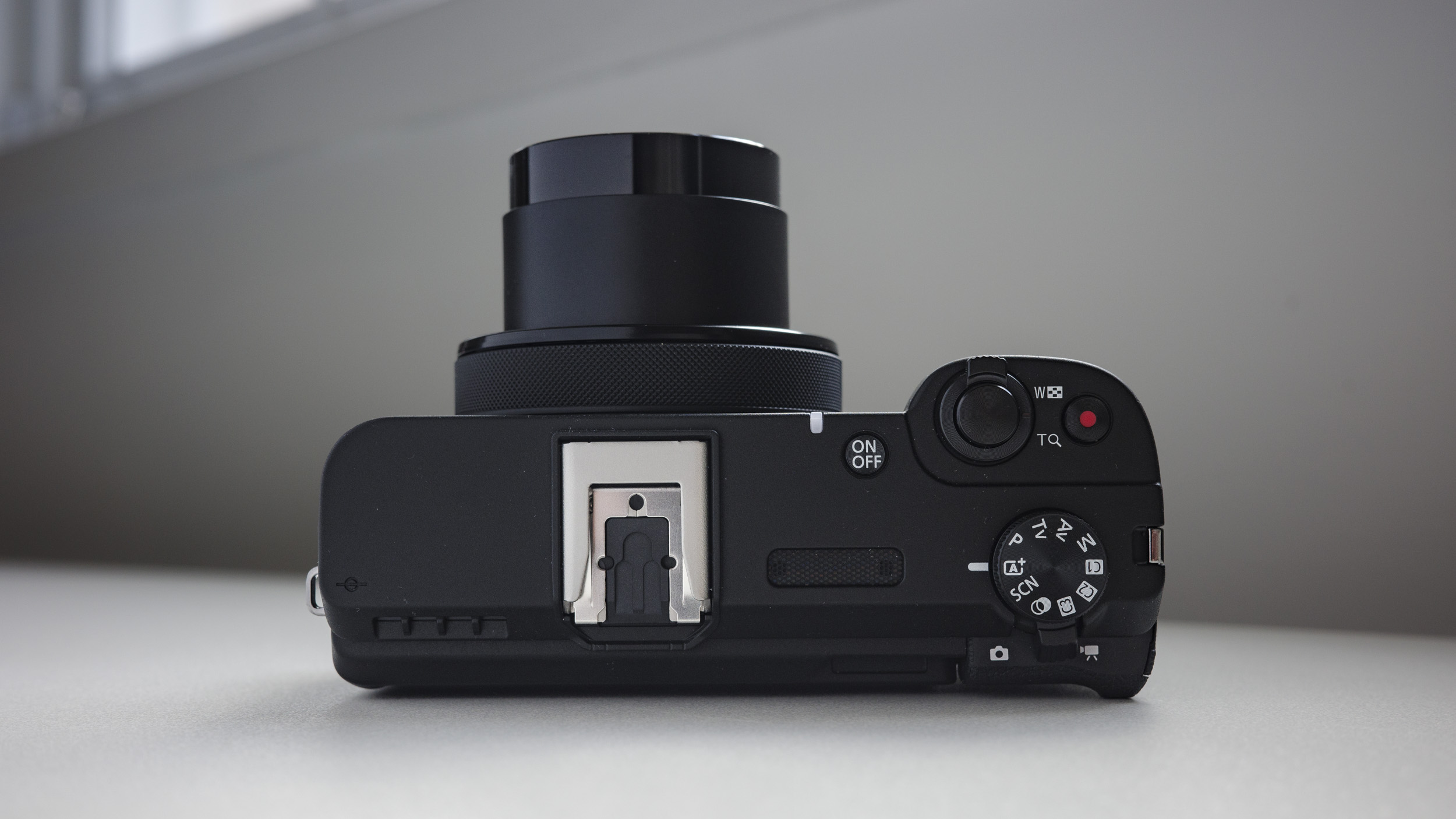
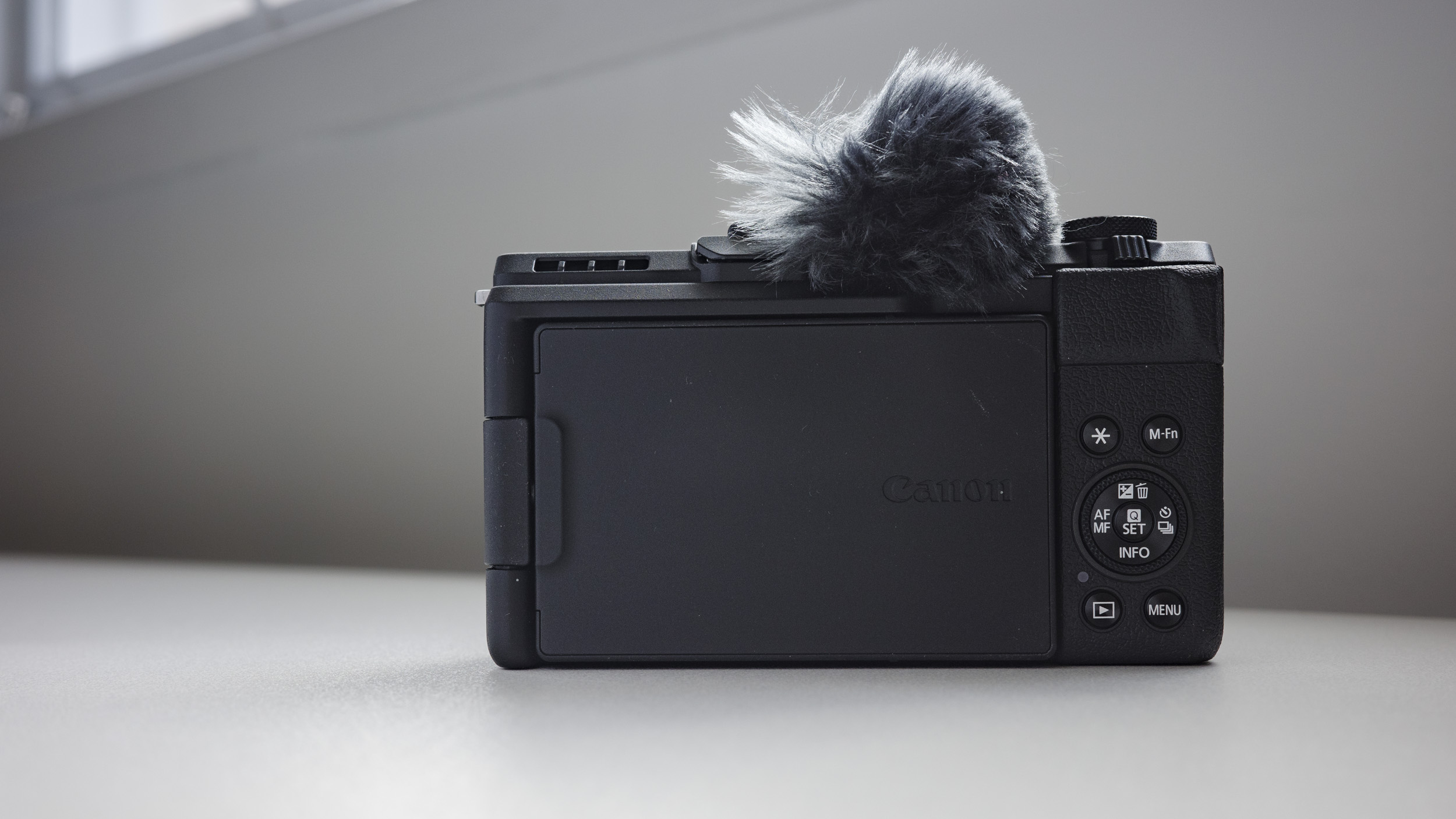
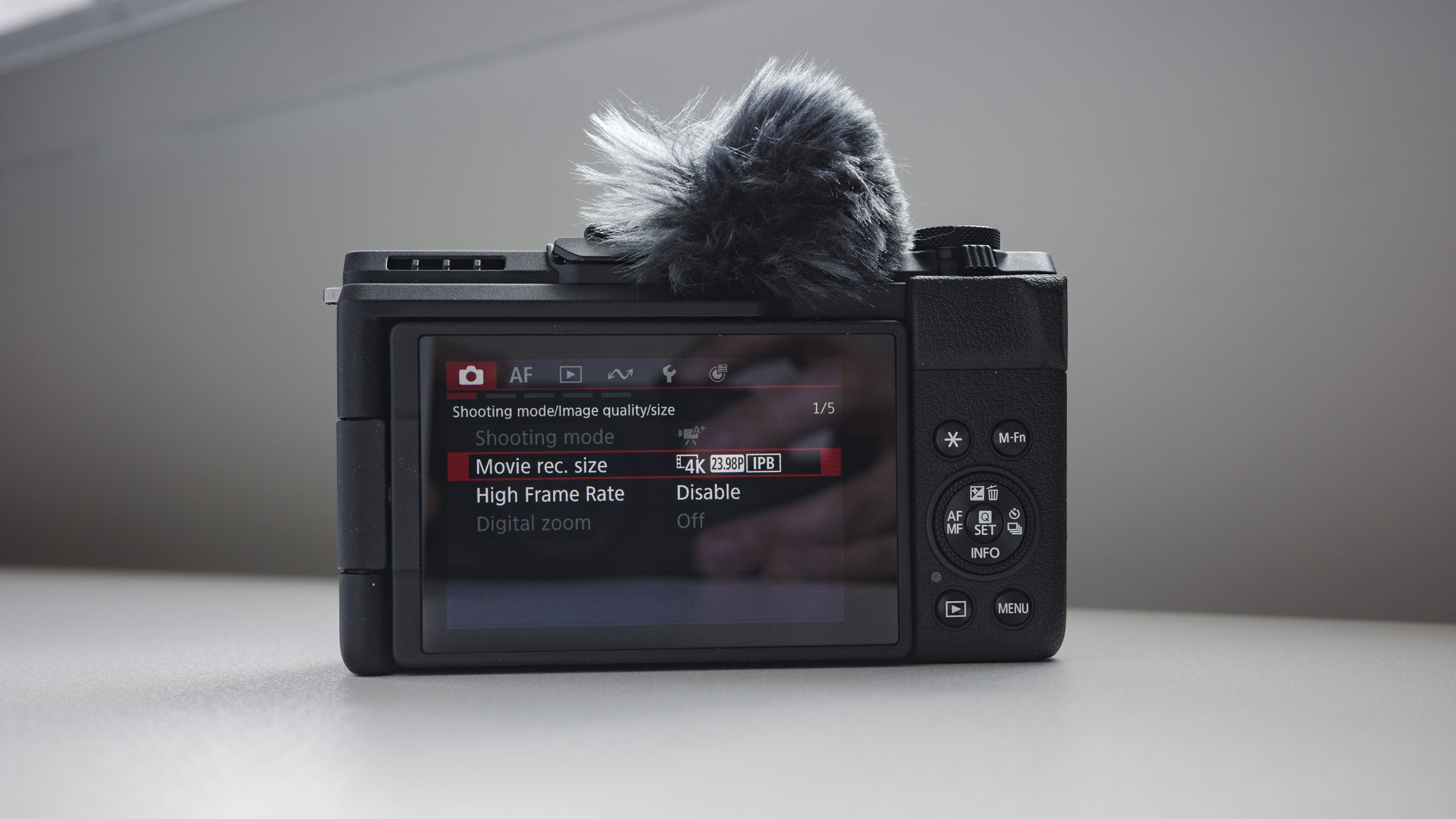
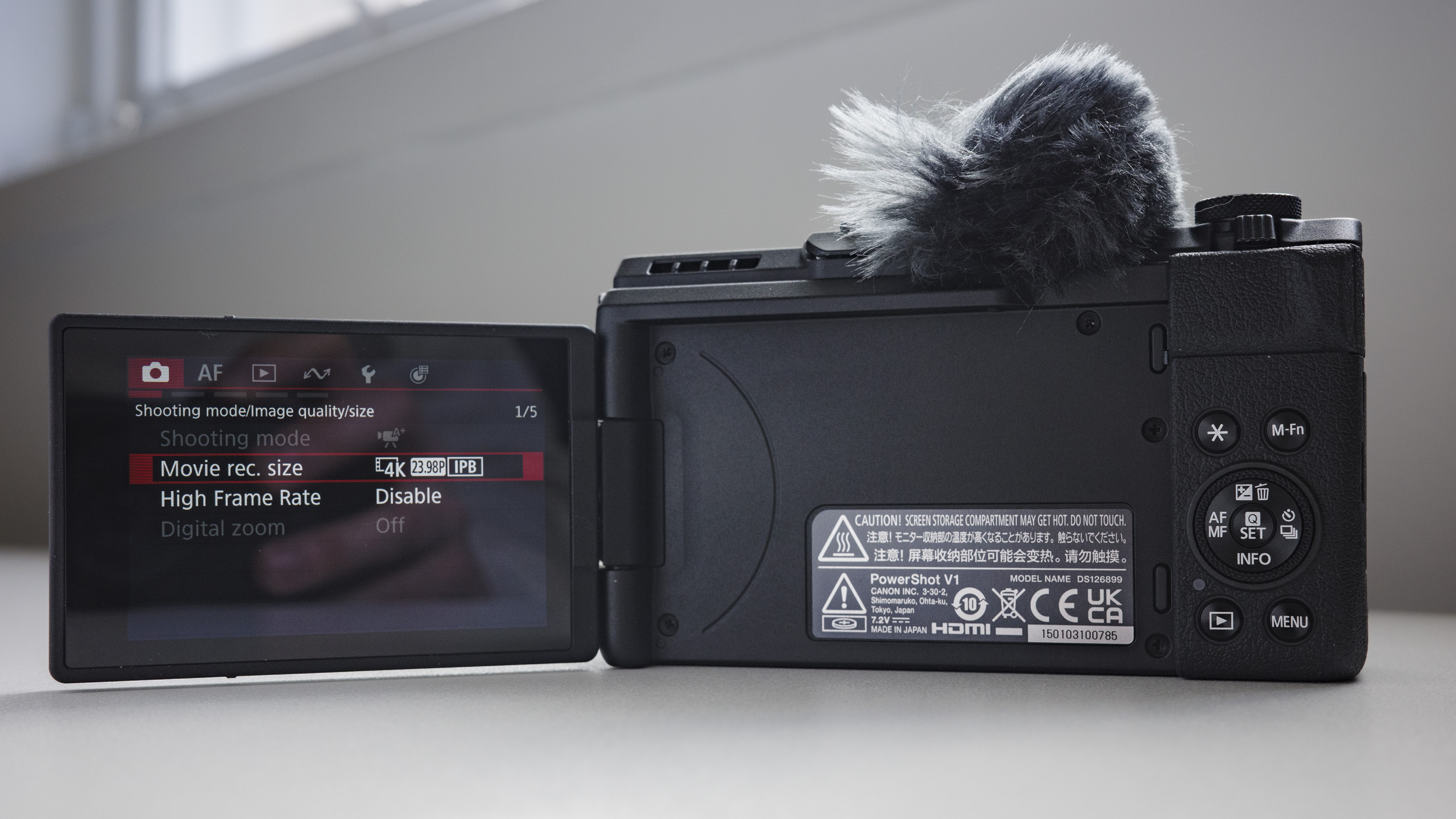
Connectivity is about what I'd expect on a video-centric compact camera. There's USB-C for data transfer and recharging purposes, and it can also be used for UVC/UAC streaming, which I'll discuss in the next section of the review. Then there are 3.5mm microphone and headphone ports, and a micro HDMI output. I'd have preferred full-size HDMI, but can't complain too much about that given the camera's compact size.
Cooling vents are found on the top and left-hand side of the camera, and these effectively enable unlimited 4K video record times. This isn't the sort of feature I'd expect in a camera at this level and price point, so kudos to Canon for that. Documentation points out that overheating is still a possibility with higher frame rate recording, but an on-screen temperature meter will give you an early warning should things start warming up.
Perhaps partially because of these vents, the camera is not water resistant or weather-sealed in any way, so caution in inclement conditions is recommended.
On the bottom plate there's a standard tripod mount, plus a door hiding the battery and single SD card slot.
- Design score: 3.5/5
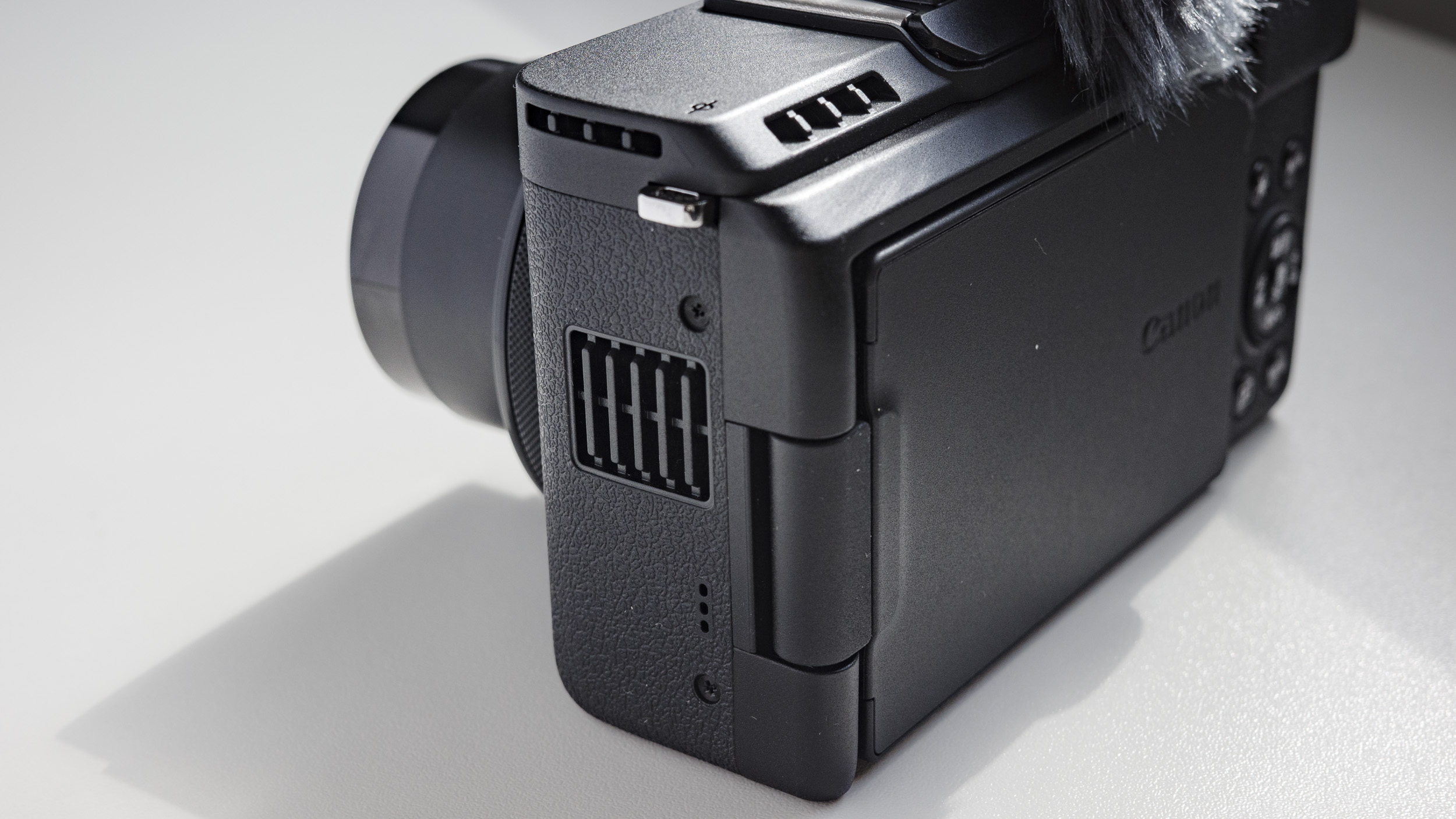
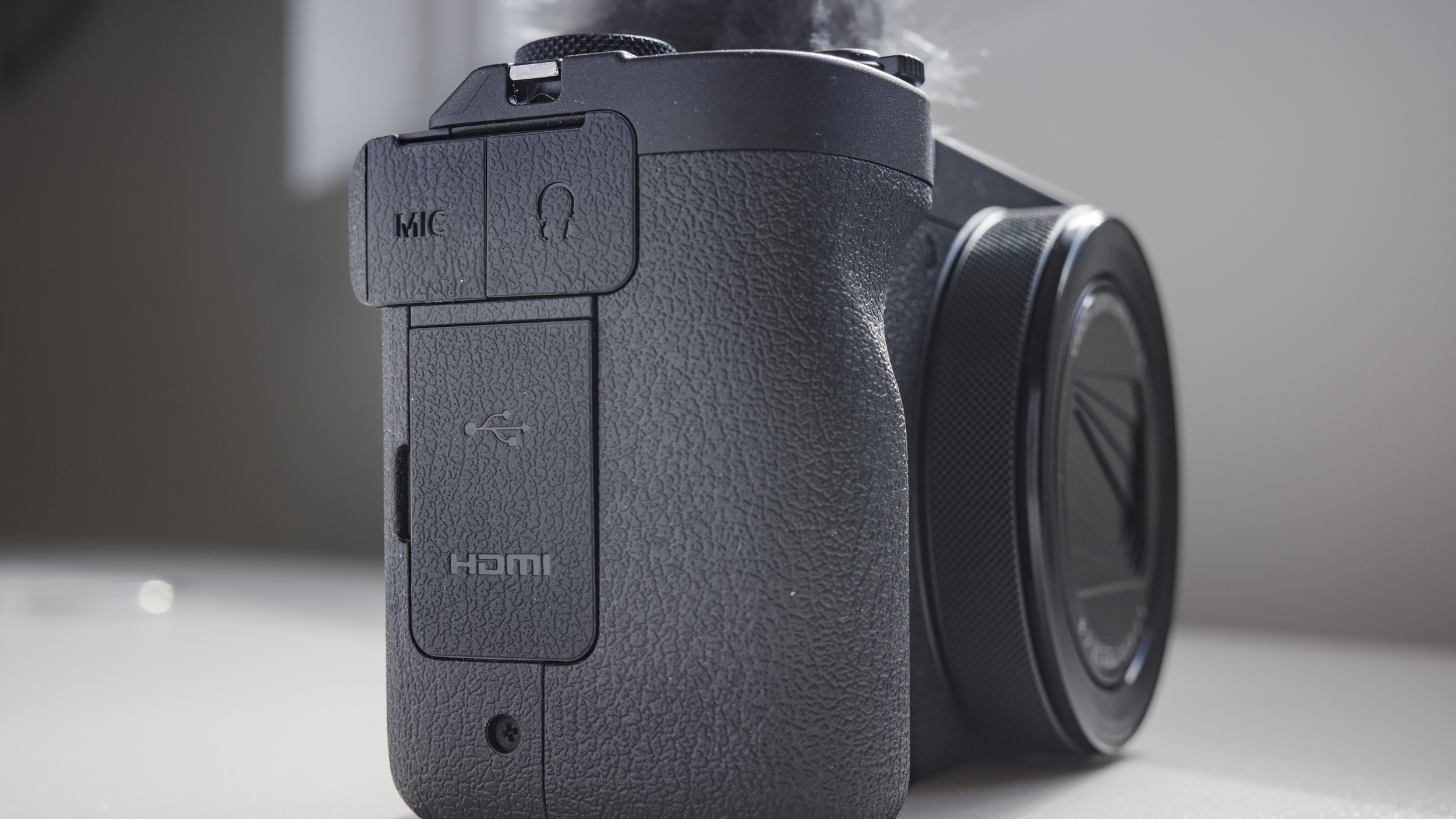
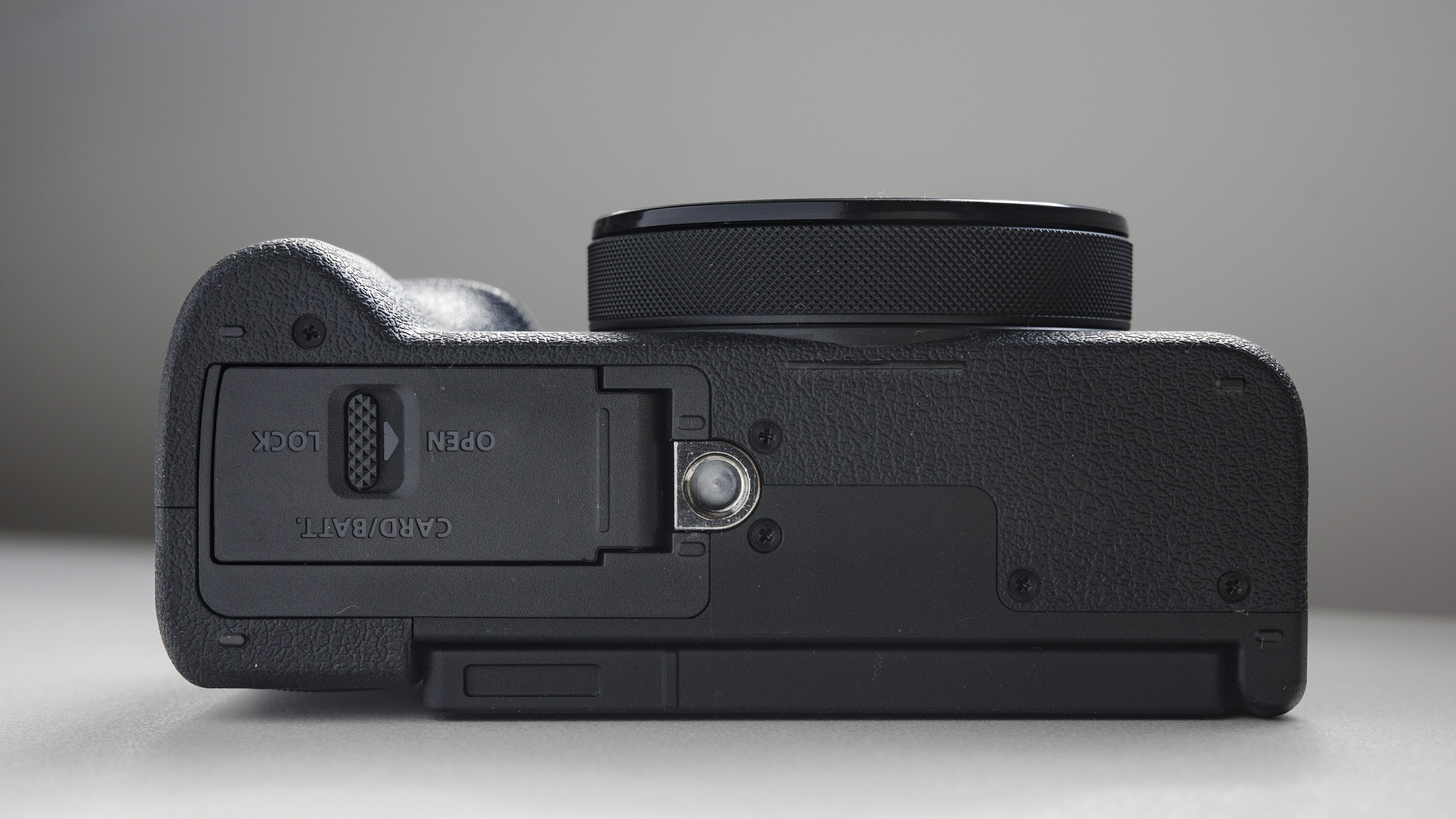
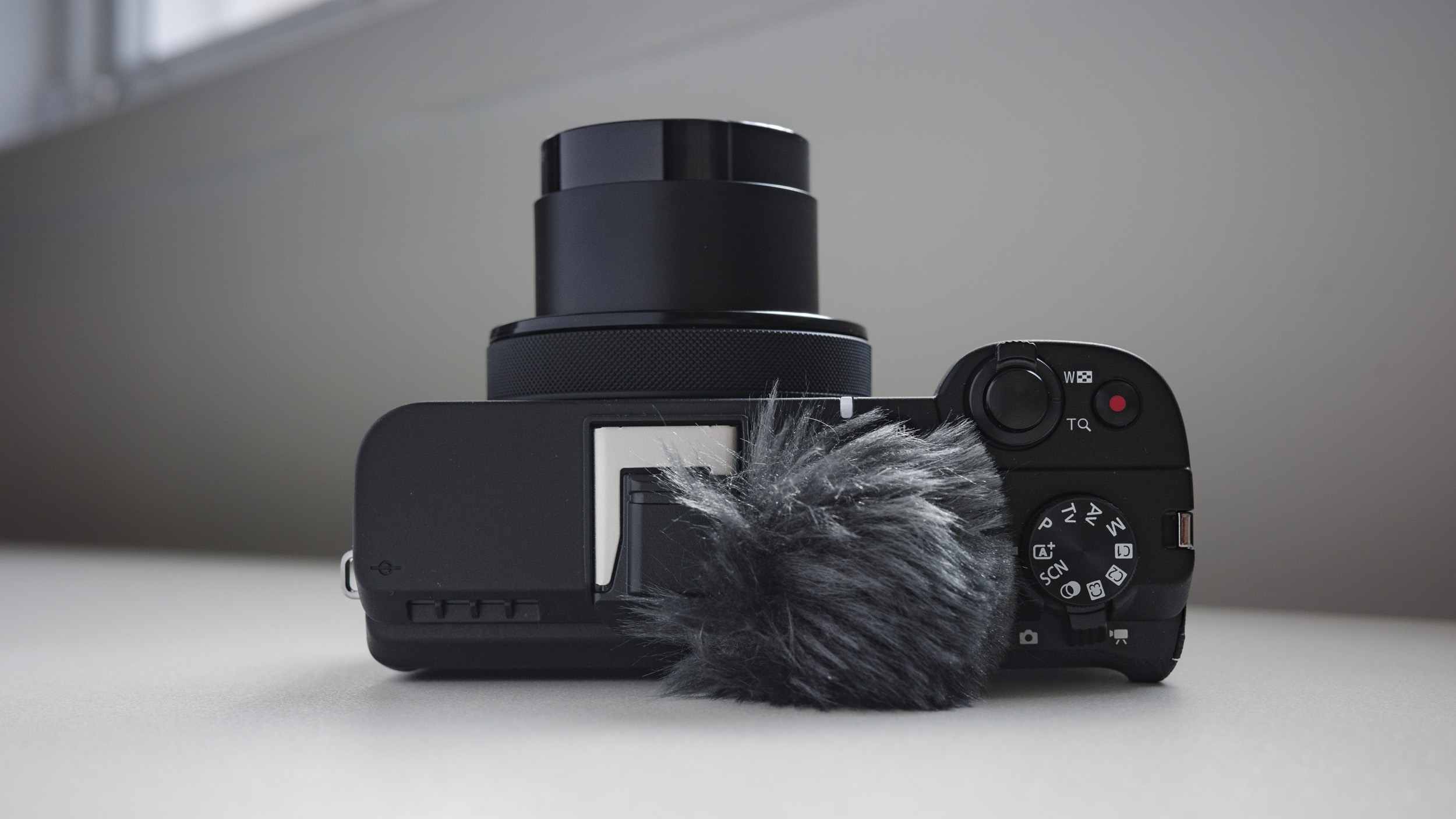
Canon PowerShot V1: Performance
- 16-50mm f/2.8-4.5 lens with optical image stabilization
- Dual Pixel AF II autofocus system with subject recognition
- Internal mic captures good quality 16-bit audio
Canon has fitted the PowerShot V1 with a wider zoom lens than most of its rivals. 18mm is the standard, but the V1's goes to 16mm at the widest point, which is a superb field of view for handheld vlogging.
It zooms optically to 3.1x, which is 50mm equivalent and handy for portraits and getting a little closer to distant subjects. The lens also has decent close-focusing skills, so you can create photos and dynamic video cutaways for vlog footage – check out the flower closeups in my sample gallery below for examples.
It's also equipped with optical image stabilization (OIS) that's rated up to 5EV. That's decent performance for photography, though it's of little use for video. For that, the camera has additional digital (or electronic) image stabilization (DIS). There's a small crop of the image area with DIS active, and even more with the enhanced DIS option, and that's where the V1's wider-than-most 16mm wide focal length is particularly handy – you'll still be able to frame yourself nicely in the shot with stabilization active.
The stabilization is generally impressive for video, and allowed me to shoot handheld without too much distracting shaking going on. When compared to its two closest vlogging camera rivals, I'd say the PowerShot V1 sits somewhere in the middle: the DJI Osmo Pocket 3's self-levelling gimbal makes it a real superstar of stability, whereas the Sony ZV-1 II's digital-only image stabilization doesn't really feel up to snuff for a vlog-centric camera.
The PowerShot V1 comes with very fast and effective autofocus too, courtesy of Canon's Dual Pixel AF II system. It's adept at locking onto subjects almost instantaneously, and has impressive recognition built-in for humans and animals. I found it picked up people, cats and dogs every time, and effectively tracked them as they moved too.
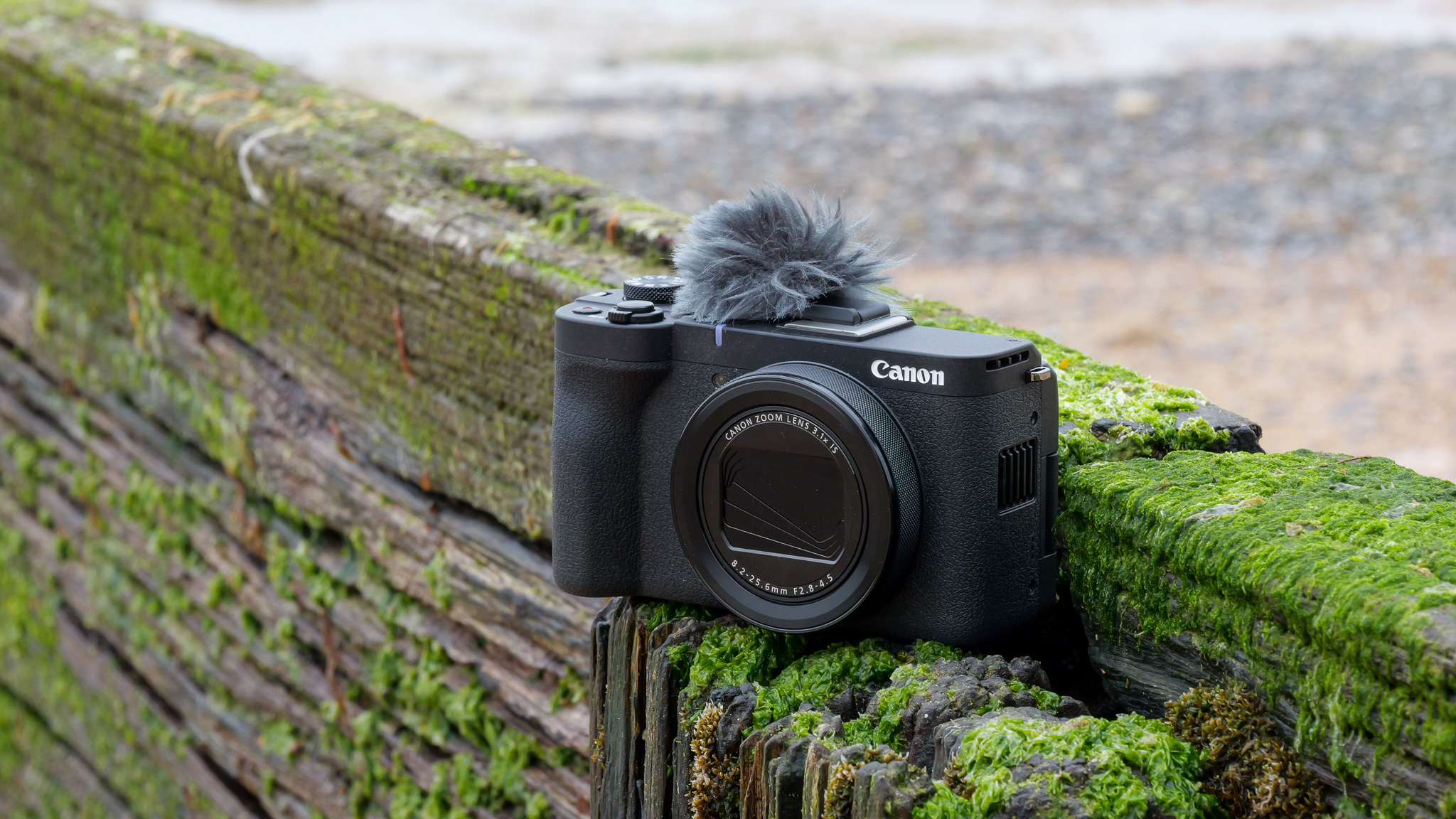
There's a decent internal mic able to record 16-bit audio in AAC or PCM format, and Canon provides a fluffy 'dead cat' wind muff in the box. This slots into the hotshoe and sits directly on top of the mic, helping to damp down wind noise and provide clearer recordings on blustery days. When using the internal mic, the wind muff feels like a must, even if it somewhat obstructs some of the camera controls, such as the on/ off switch. It's quite effective, although on especially windy days you'll still get some disruption to your audio.
Still, if you're a serious creator you'll be using an external mic instead, and these can be connected using the 3.5mm mic input, with sound monitoring possible through headphones and on-screen. During the review process I tested the camera with my DJI Mic 2, with the receiver mounted on the hotshoe, and found it to be a slick setup that certainly delivered better sound quality (including less wind noise) than the internal mic.
Another handy feature for vlogging is a tally lamp, which lights up red to confirm when you're recording. You can also opt for manual focus peaking and zebra display on the screen, plus timecode – again, all handy video features.
Note that you will need a fast-ish SD card to make full use of the PowerShot V1's 4K recording modes without abrupt stoppages. Canon recommends a "fast" UHS-II type card, but my Lexar V60 UHS-II card struggled at times when recording 4K, so you'll probably want to go with a V90 card to ensure you don't run into any write-speed issues.
Battery life is solid if unspectacular. A fully charged battery should be able to shoot around 400 still images or just over an hour of video according to Canon, but in my impression when recording 4K video it was a little less than that. The good news is that the camera's USB-C socket can be used to supply continuous power, so if you're filming at home you don't need to worry about battery life at all.
As well as for charging, power supply and file transfer, the USB port can be used to attach the camera to a computer for live streaming purposes, effectively turning the PowerShot V1 into a high-spec webcam. It uses the UVC/UAC standards, so will work with most streaming platforms.
- Performance score: 4/5
Canon PowerShot V1: Image quality
- 4K video at 24 or 30fps, 4K at 60fps with a 1.4x crop, Full HD at 120fps
- Canon Log 3 color profile supported
- 22.3MP still photos in JPEG and RAW
During my time with the camera I have been able to use the various video record modes, take photos, check image stabilization performance and shoot a few short vlogs using the internal mic, plus some B-roll footage.
In the sample vlog footage below, I cover 4K 30fps, 4K 60fps, image stabilization, and the 3.1x optical zoom among other things.
Usually, the camera's exposure metering and color are linked to the focus area. When focus was locked onto me, exposure looked fine with the help of the built-in auto ND filter, although I have seen shifts in the color of my skin in vlogs – some look spot on, others a little green, others too magenta. It's a good practice to set white balance manually, rather than rely on auto white balance.
Below you'll find some B-roll footage I captured to demonstrate the general image quality of the camera. This was mostly captured at 4K 24fps quality, using the flat Canon Log 3 color profile, which I then color corrected using DaVinci Resolve 19.
There's also a short clip of slow-motion footage in there, which is captured at 120fps before being played back at 'normal' frame rates – but note that the maximum resolution available while using this high-speed recording mode is Full HD. Audio recording is also disabled for slow-motion capture.
4K 60fps video looks great too, although as previously mentioned you'll lose out on the option for Digital Image Stabilization at this setting, as well as having to put up with a 1.4x crop of the image area. I don't mind the crop so much, as it effectively extends the lens for close-up B-roll.
There's also a crop when you employ enhanced DIS (not available with 4K 60fps), but the V1's widest 16mm focal length gives a lot of scope for cropping into the image area for vlogging. Lens focal length might sound like a small thing, but Canon has been smart with its choice of 16mm focal length for the wide setting.
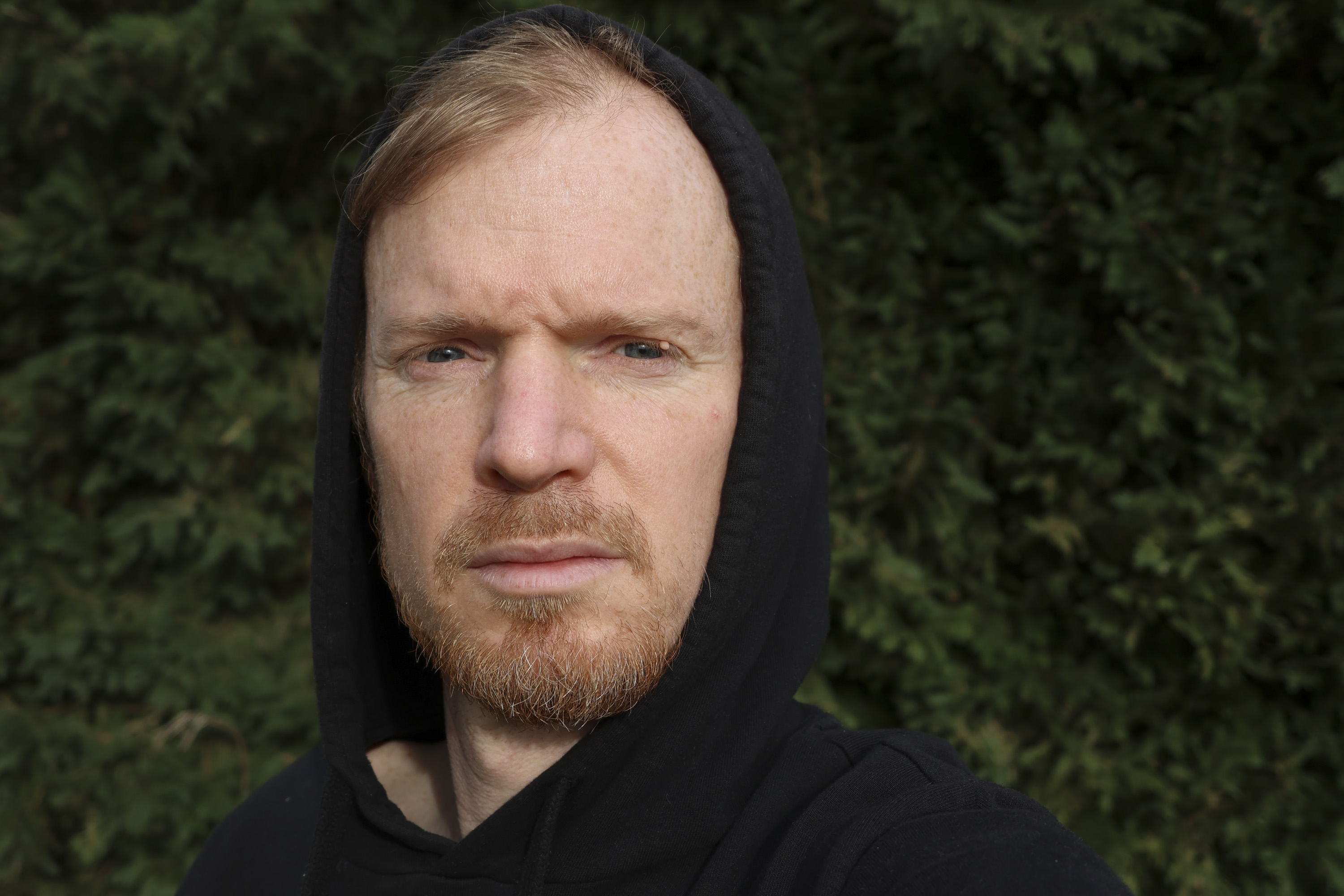
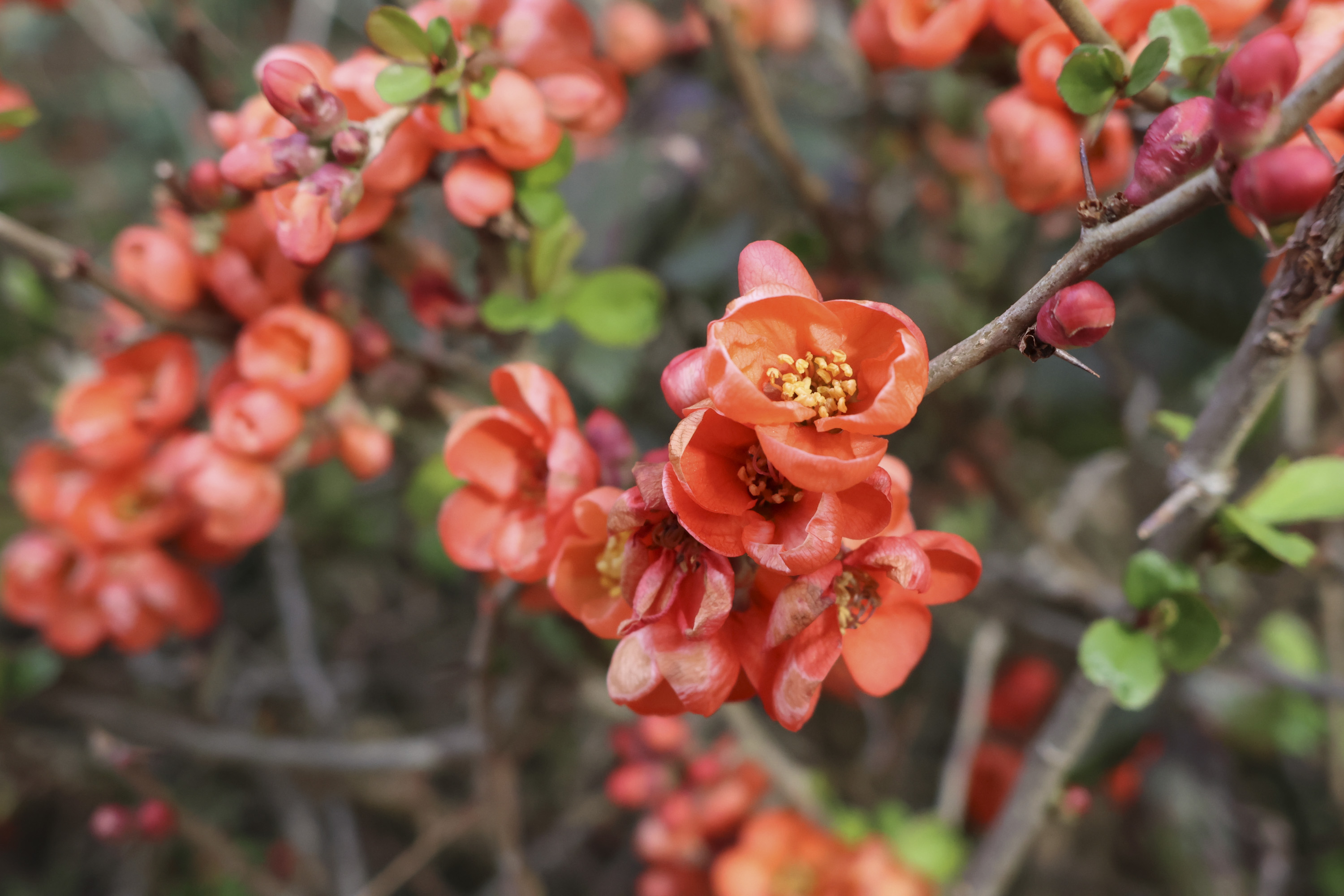

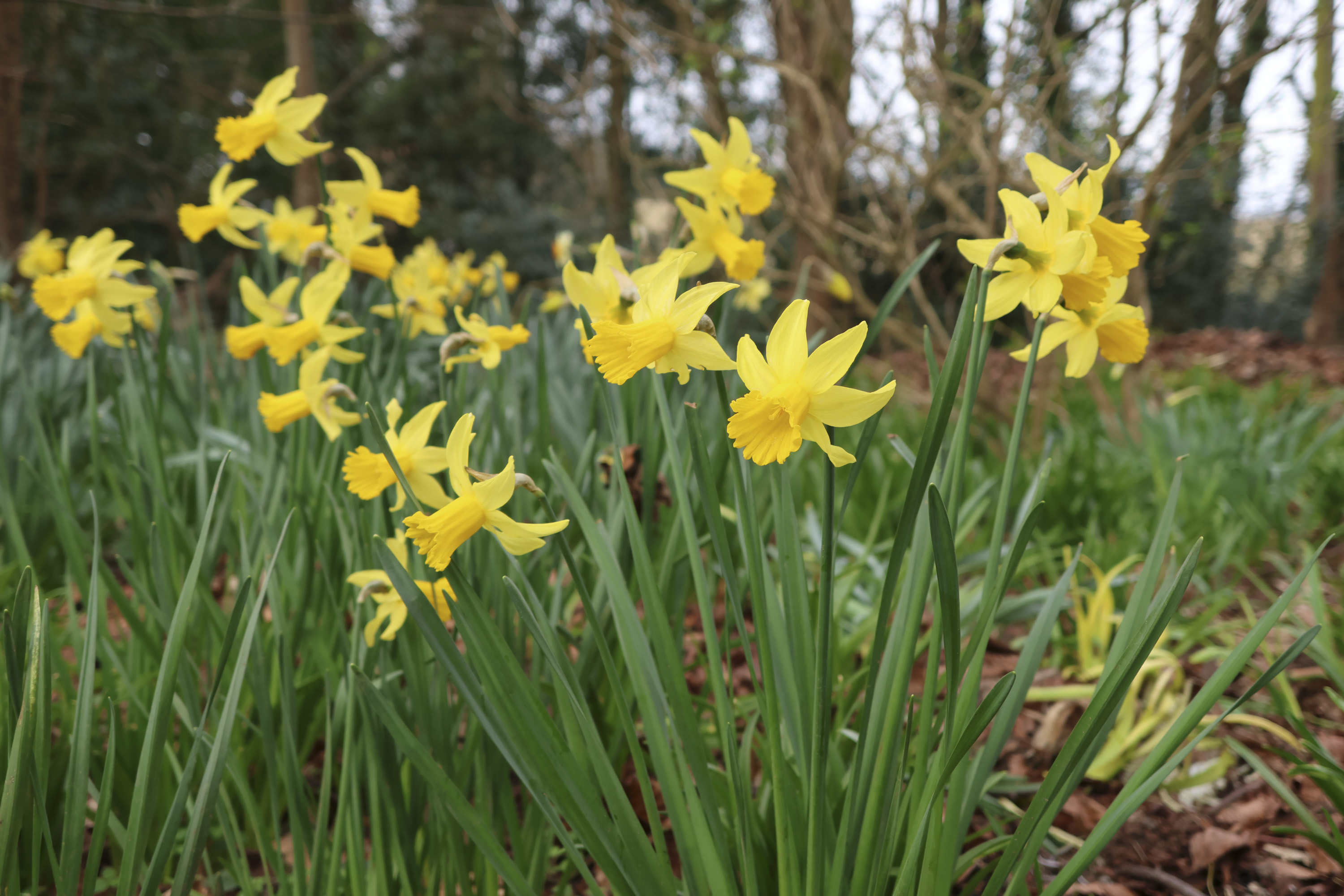
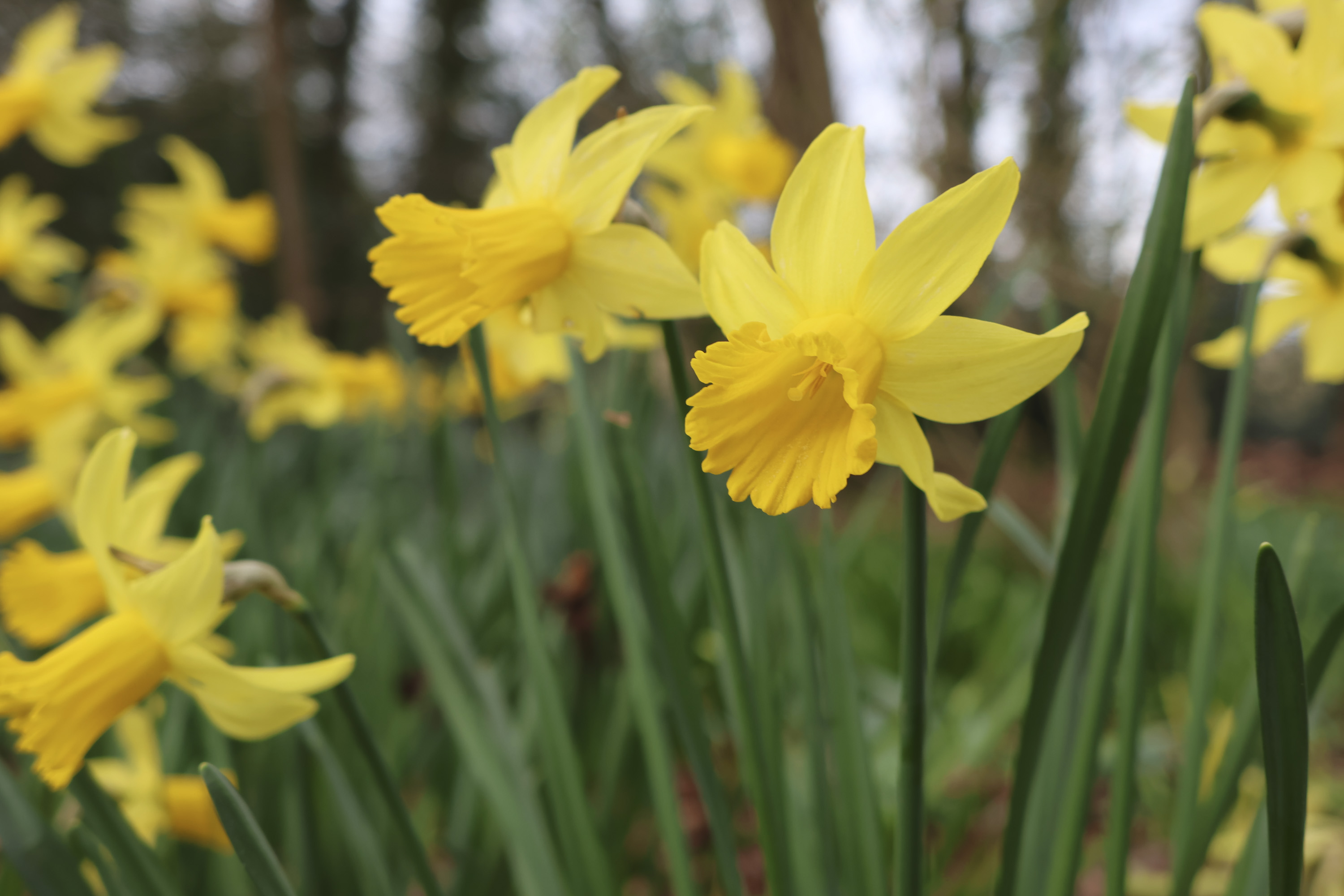
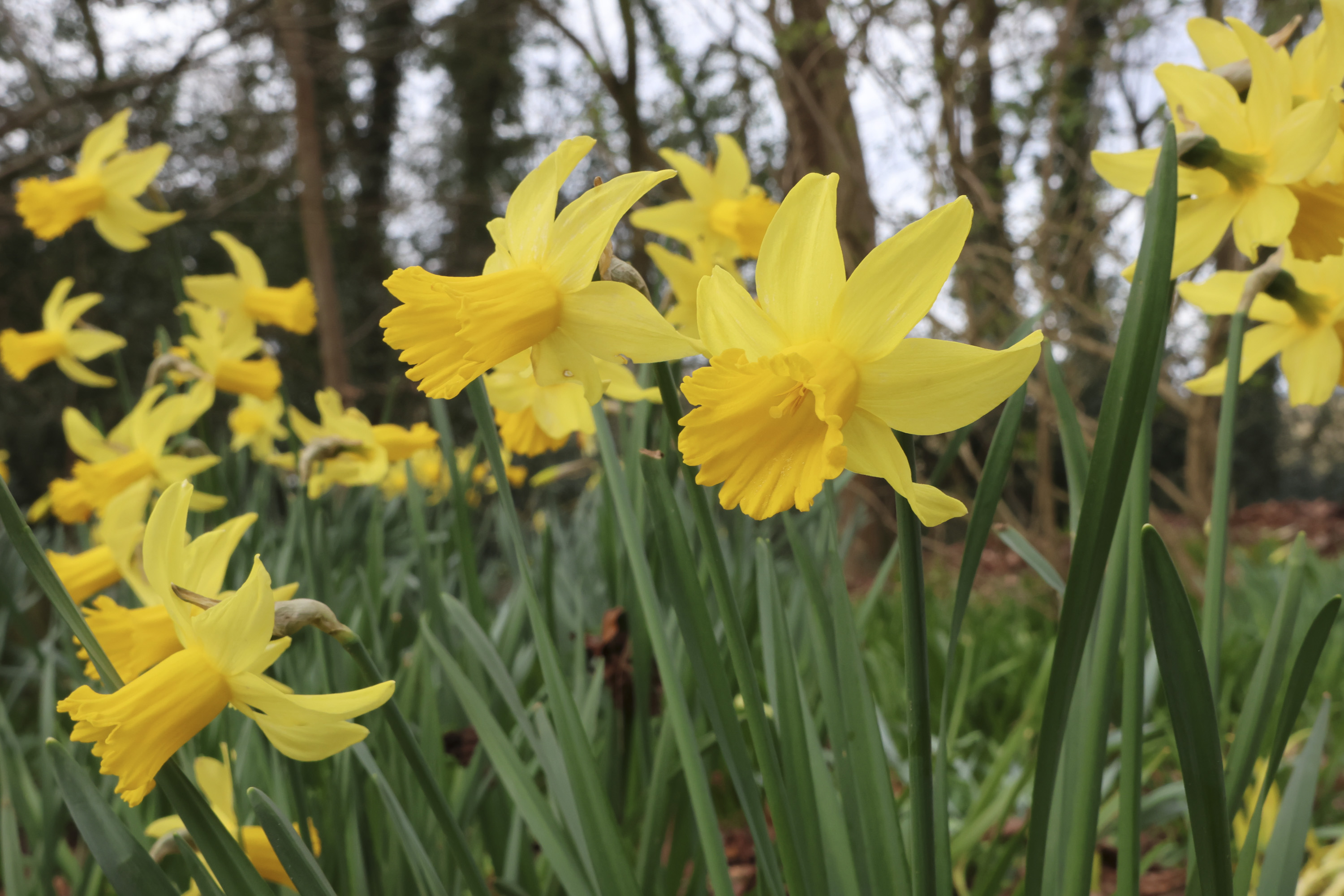
Canon's 22.3MP 1.4-inch sensor is new, but we get Canon's familiar color science, and that's a good thing. Full-size photos look natural and are packed with detail – my skin and facial hair are super-crisp in the selfie above.
The color science means JPEGs straight out of the camera look lovely, but I also took photos in RAW format, editing them later on my computer using Adobe Lightroom. The results are in the gallery below, and I was largely impressed, particular with some of the colors, shadow detail and contrast I was able to draw out of the files with just a bit of minor tweaking.
Despite the large size of the PowerShot V1's image sensor, it's not what I'd call a low-light monster. Noise creeps in at fairly low ISO settings – probably as a result of the lens's rather small maximum aperture. The grain caused by noise is combated well in the in-camera JPEGs and I was also able to minimize its impact in Lightroom for the RAW files, but it's worth noting – especially since Canon has not equipped the camera with a built-in flash to illuminate dark scenes.
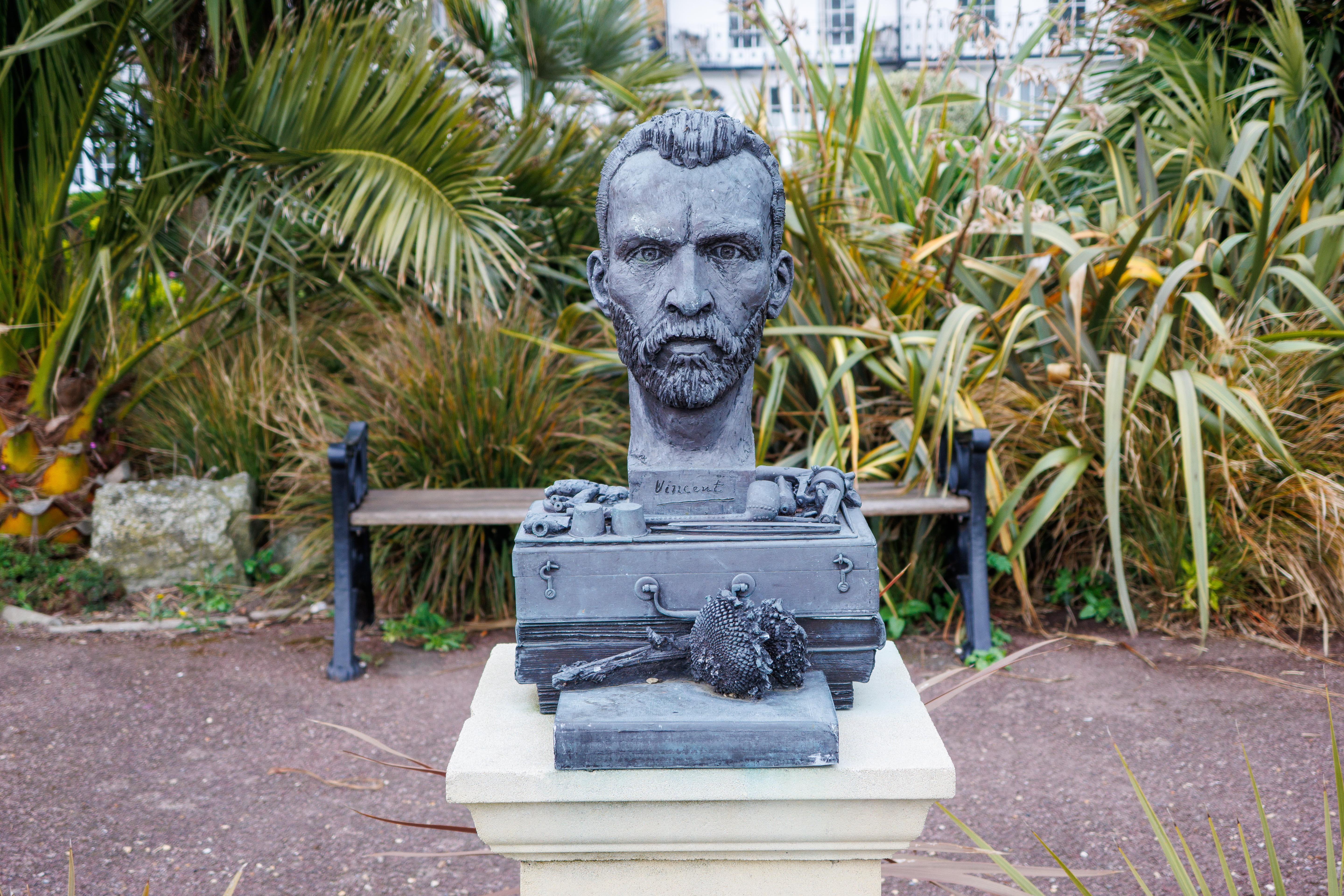
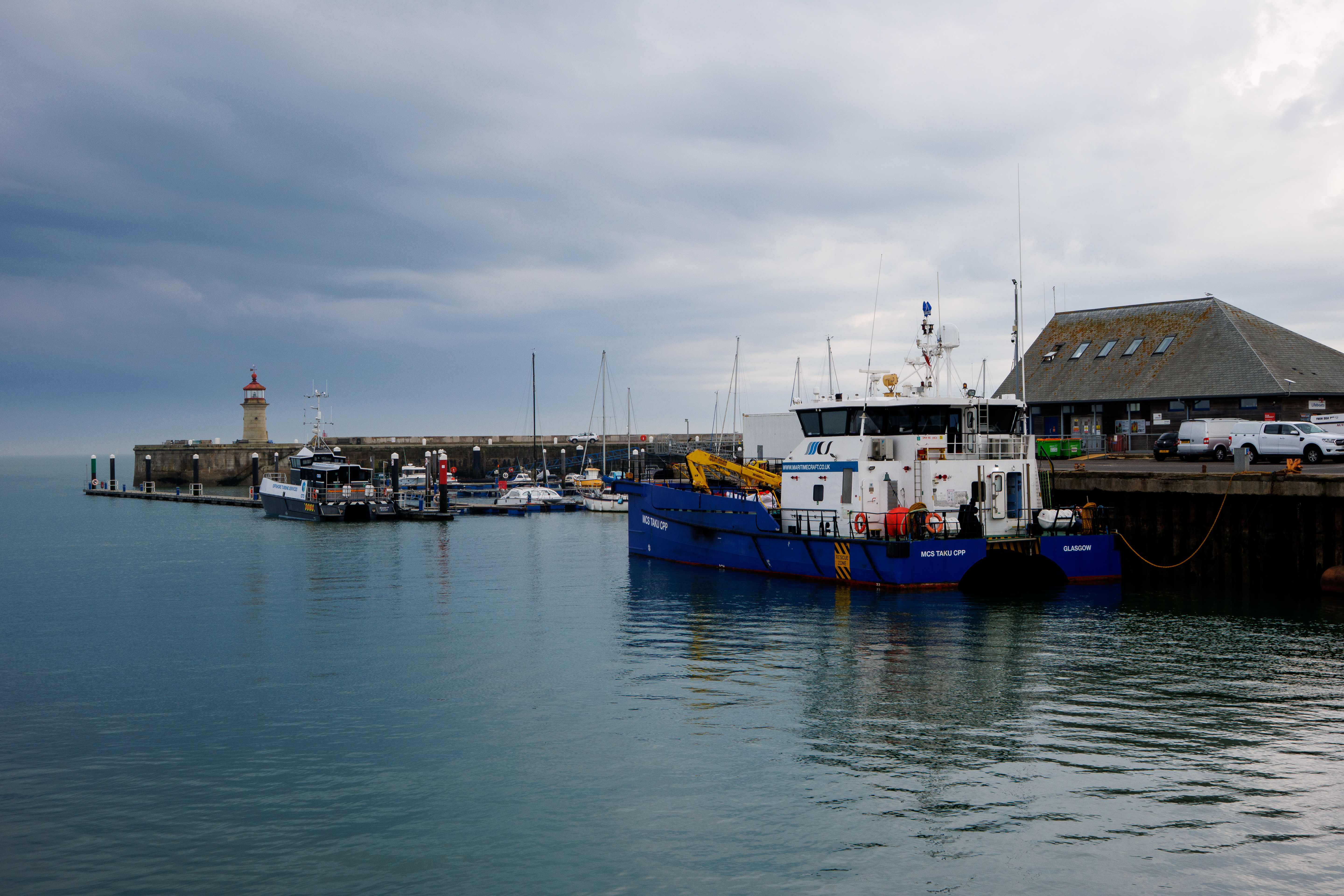
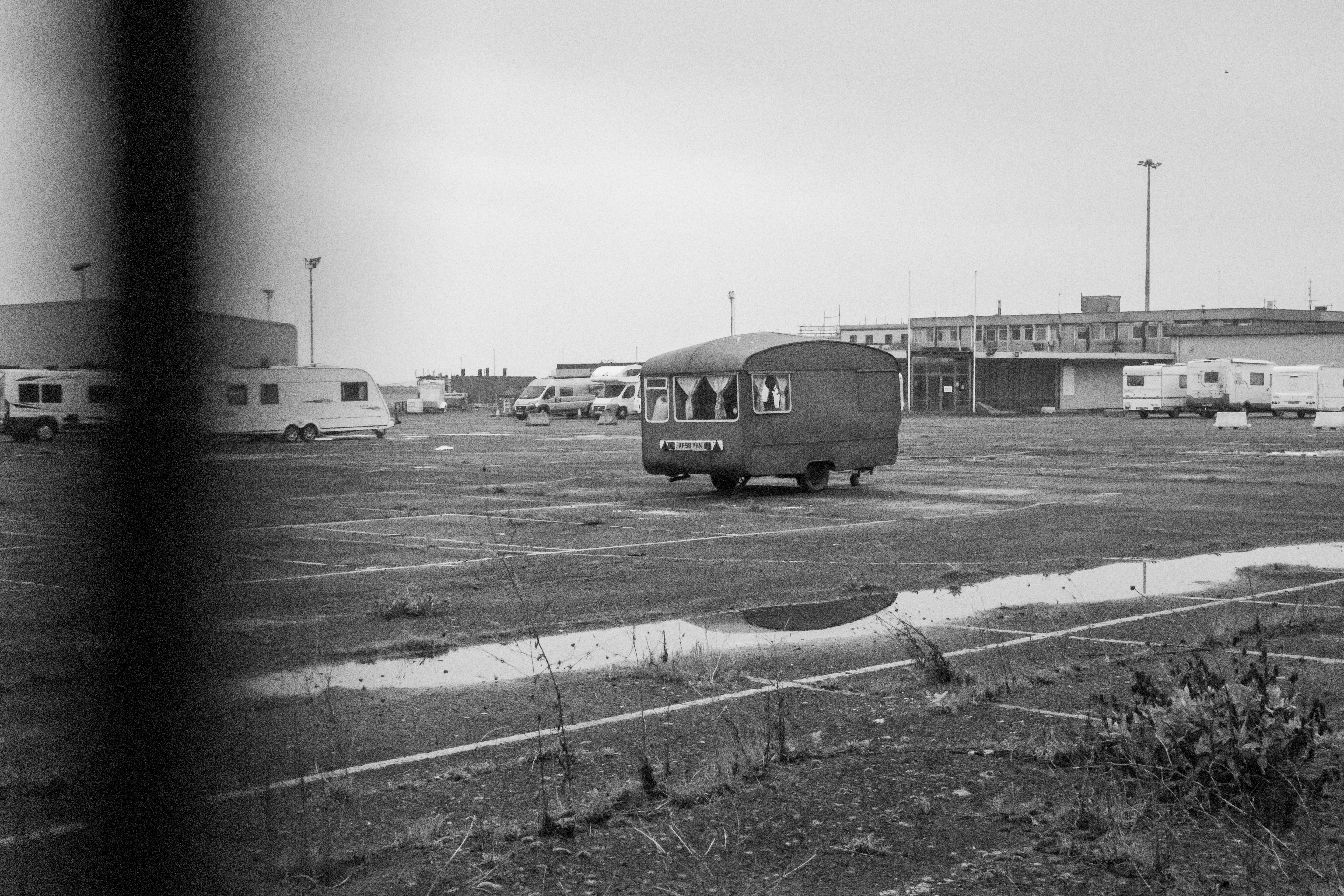
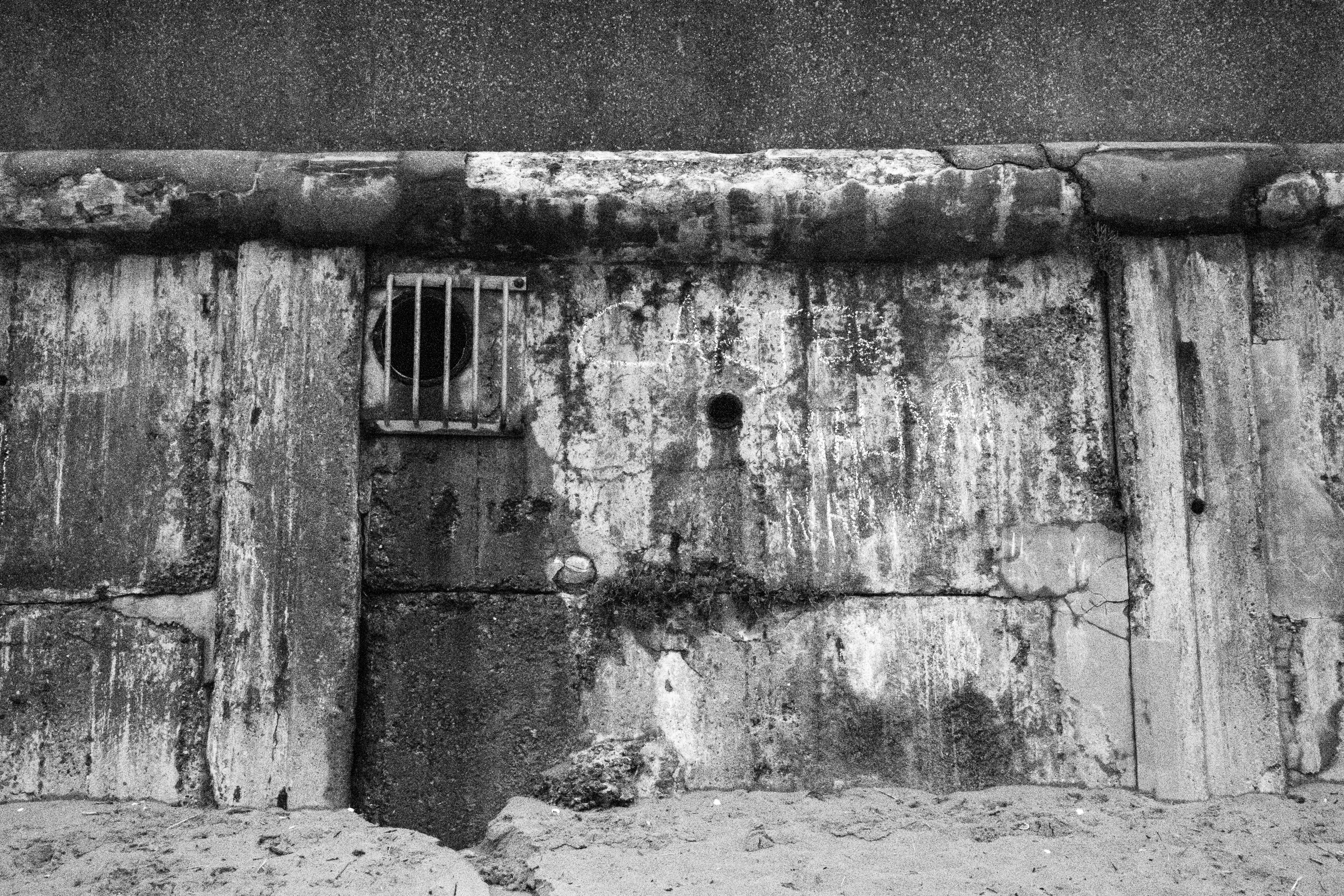
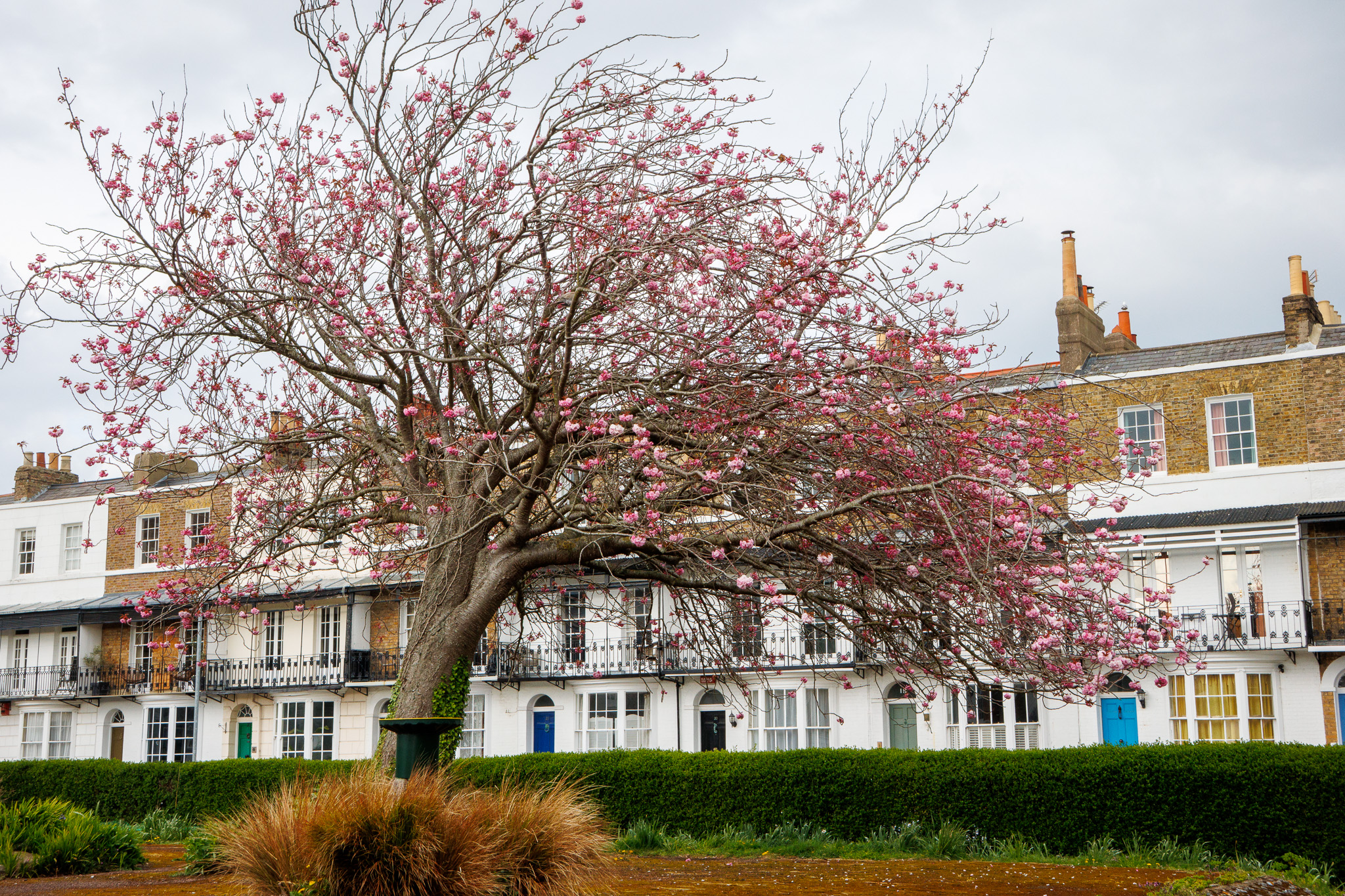


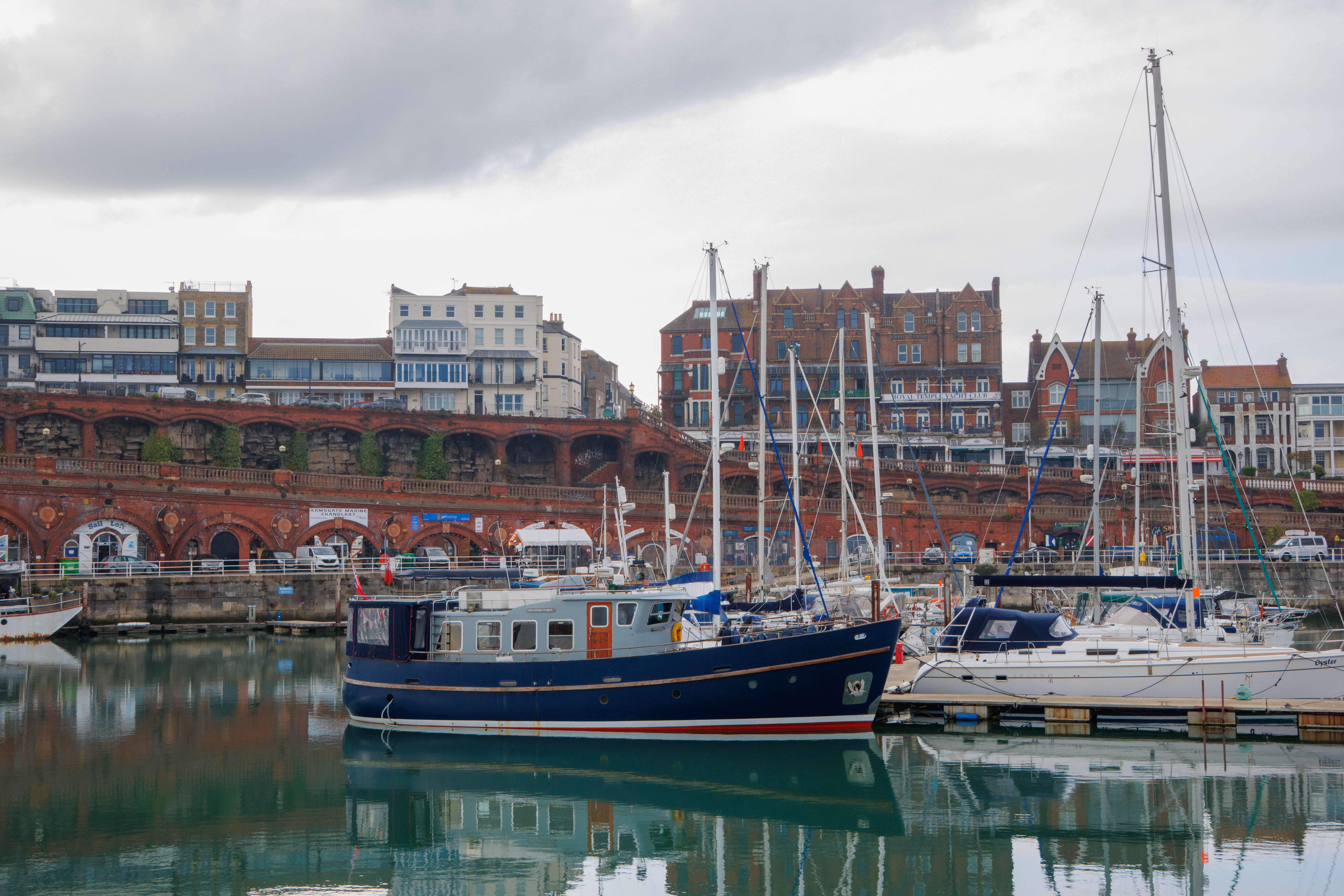
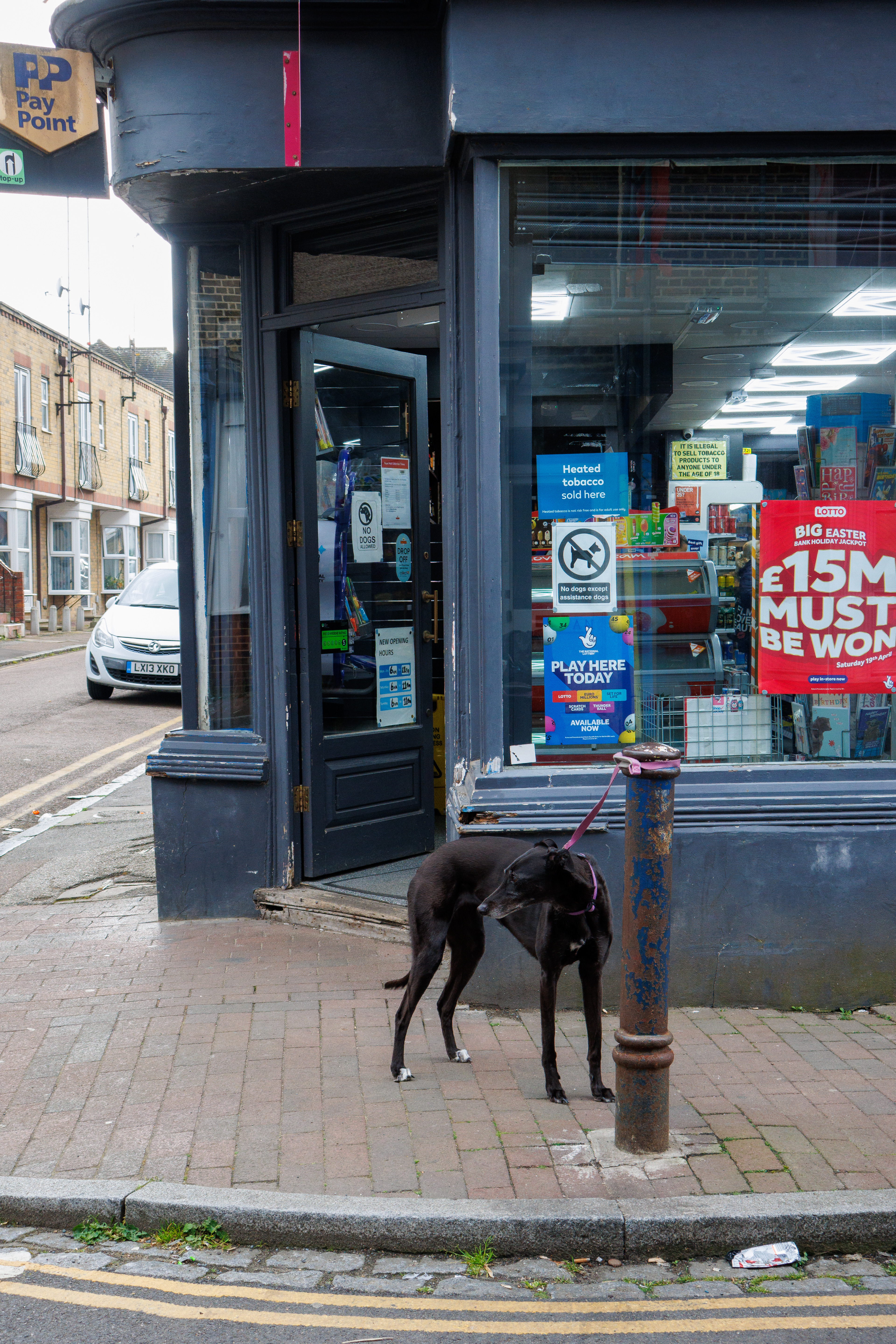
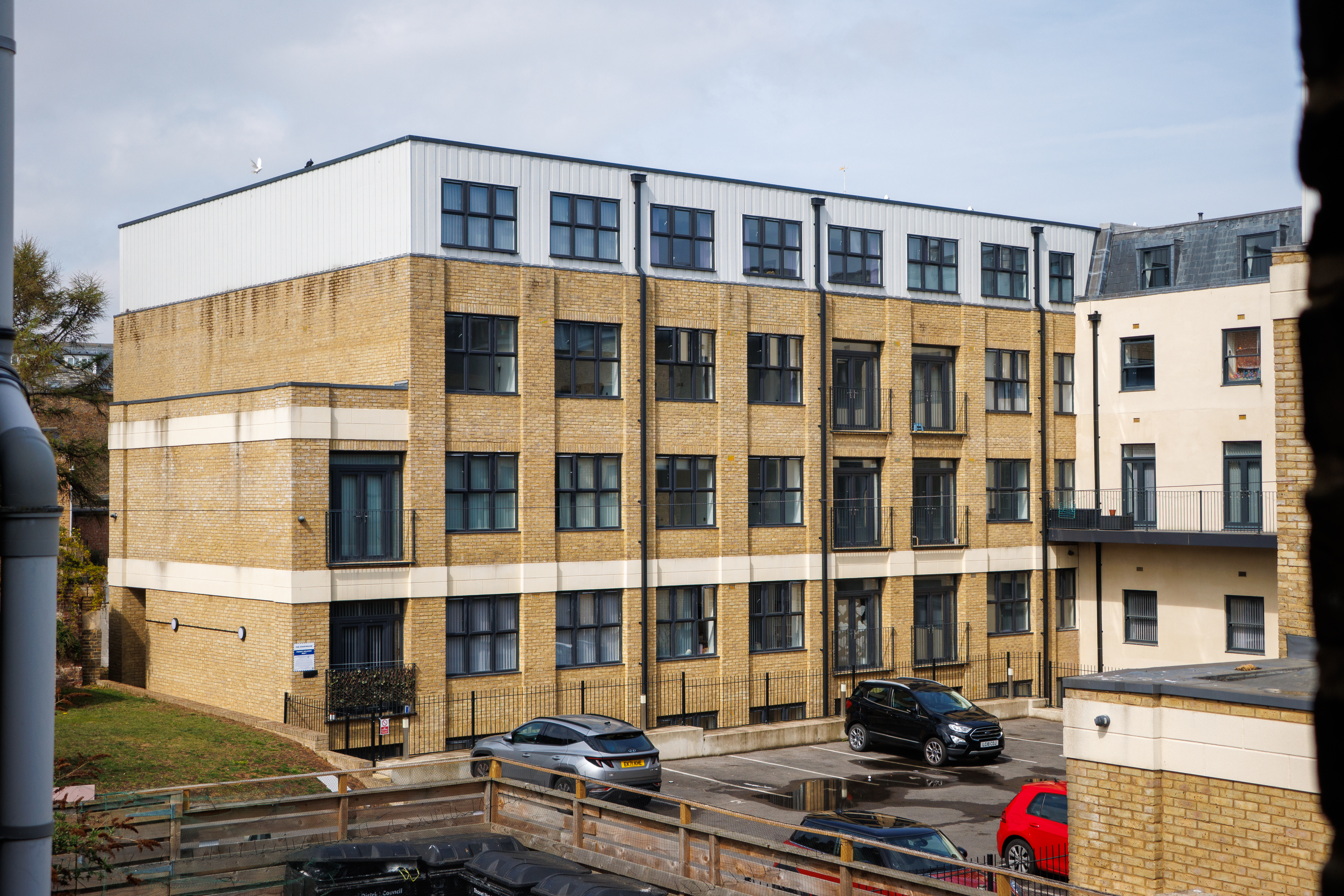
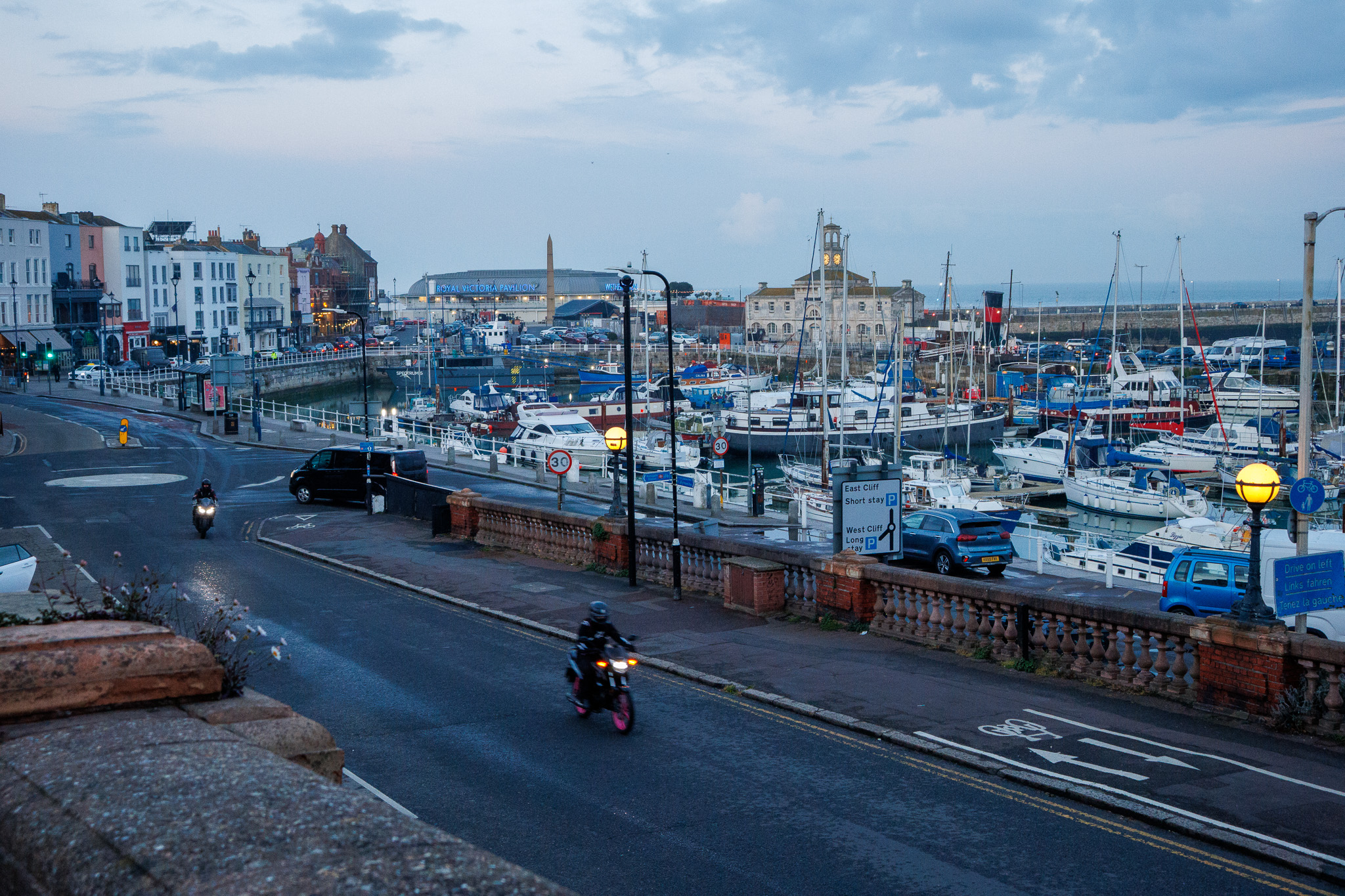
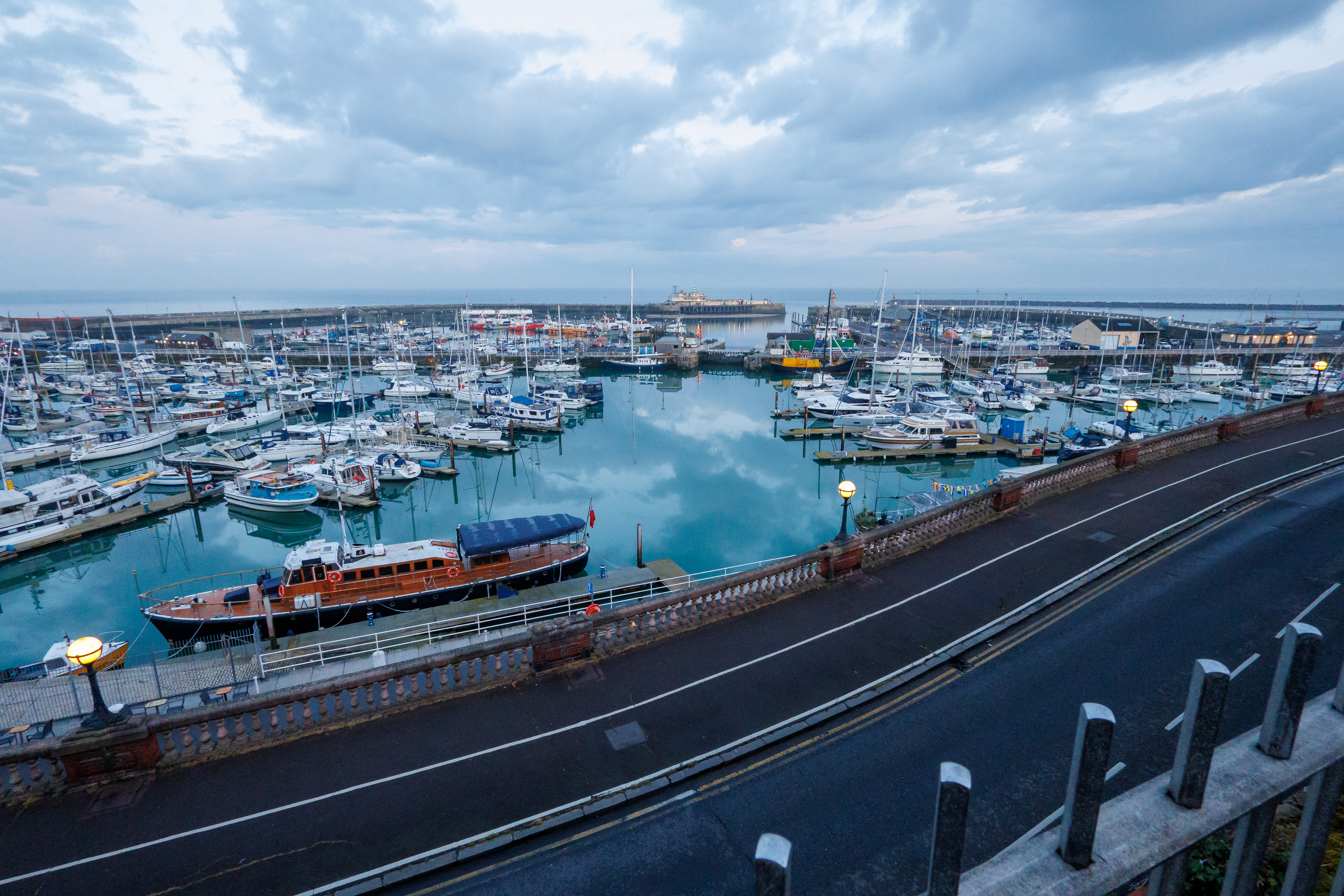
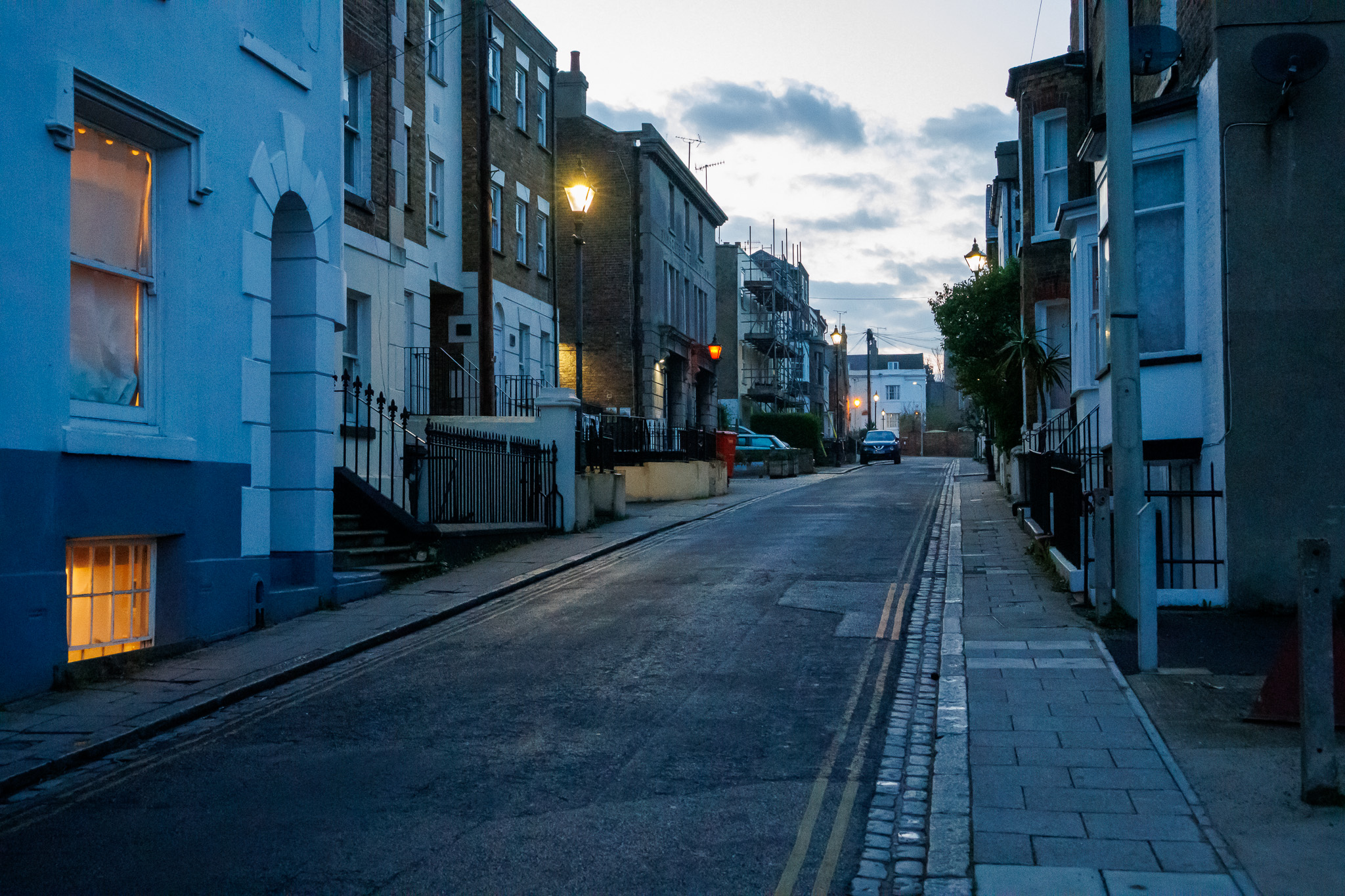
As I mention above, the maximum aperture of the camera is pretty low, and I would have I have preferred something like f/1.8-2.8. However, that wouldn't be possible within the same compact lens dimensions. In any case, with the lens set to its maximum aperture (f/2.8-4.5) and when the focus distance is close, it's possible to get a lovely shallow depth of field.
- Image and video quality score: 4.5/5
Canon PowerShot V1: testing scorecard
Should I buy the Canon PowerShot V1?
Buy it if...
Don't buy it if...
Canon PowerShot V1: Also consider
A 1-inch sensor, a gimbal stablized camera, a pocketable and compact stick-like form factor – the Pocket 3 is as muc a dedicated vlogging camera as they come. That, along with its competitive price, is its trump card over the PowerShot V1, which largely sticks to conventional camera design that marries photo and video skills, without delivering the features that demanding photographers need. That said, the V1 has a larger sensor, longer record times and manages heat better, so is the more rugged of the two cameras.
Read our in-depth DJI Osmo Pocket 3 review
2025's most obvious rival to the PowerShot V1 is the Sony ZV-1 II – the two cameras share a remarkable number of similarities. The ZV-1 II's launch price was 10% less than the V1 and it's cheaper still now, but overall the PowerShot V1 is the better camera of the two, with larger sensor, wider lens, and impressive handling.
Read our in-depth Sony ZV-1 II review
How I tested the Canon PowerShot V1
- Tested a full production model for three days
- I shot various handheld video clips using a range of resolutions and frame rates, and with stabilization active and off
- I recorded vlogs using both the in-camera mics and my DJI Mic 2 external mic
- I shot photos in RAW and JPEG indoors and outdoors at various times of day
I wish I'd had at least a week with the PowerShot V1, but limited review sample availability meant I instead had just three days to put it through its paces. That was, however, enough time to use all the various video modes on offer, including 4K and Full HD videos with 60fps, 30fps and 24fps frame rates, plus the 120fps slow-motion mode. I was also able to make short vlogs using both the in-camera microphone and my own DJI Mic 2 external wireless mic, and shoot comparison videos with the stabilization active and turned off, to see how effective digital stabilization is for video. I also tested the still photography performance by taking both JPEG and RAW photos in a variety of conditions and locations.
- First reviewed March 2025



